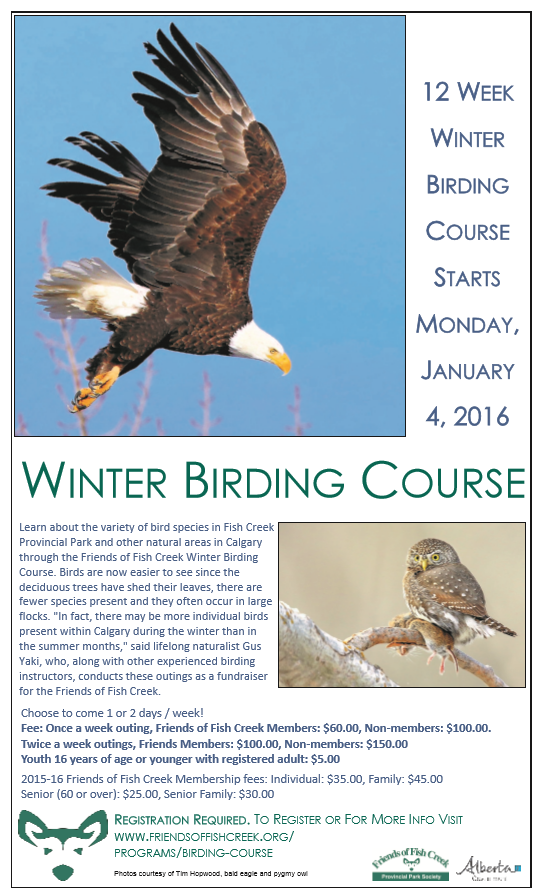
Winter Birding Course 2016


Posted by Dan Arndt
Following our great excursion to Pearce Estate Park, we headed down to the Weaselhead as our first real cold snap started to descend upon Calgary. We did get a bit of a break in the weather by Sunday, and there were a good number of birds out enjoying the sunny day!
The Weaselhead has always been a good location to find the many winter finches that come south from the boreal forest to gorge themselves on the spruce and willow seeds in years when the cone crop up north is in a low cycle, and the crop here is at a peak. In non-finch years, we still will get the usual winter birds, including four species of woodpecker, both Red- and White-breasted Nuthatches, and Black-capped and Boreal Chickadees as great stand-bys.
[exif id=”15054″]
The older trees down in the Weaselhead are great places for the woodpeckers to forage, as they have plenty of nooks and crannies for insects to huddle up for the winter, and plenty of holes and crevices for the birds to spend their cold winter nights out of the elements as well. It’s a great give and take relationship that many of these birds have with their environment.
[exif id=”15055″]
The other side of the coin is that for years, there have been many different individuals who have put up feeders on many of the trees along the main pathway, which have become hotspots for finding the expected winter species, but the occasional overwintering rarity as well, such as American Goldfinches and White-throated Sparrows.
[exif id=”15053″]
While checking out the feeders, this female House Finch flew up and allowed all of us good views of her, which should have been a hint at what we were in for later on in the day! I rarely get good looks at House Finches, either males or females, as they always seem to be actively foraging, flying, or singing high up in the trees with lots of branches in the way.
[exif id=”15052″]
The warm weather had also allowed for some larger flocks of some of the American Robins that choose to spend the winter here in Calgary. We had fifteen (yes, 15!) of these typical “spring” birds here that day, but that’s not unusual at all. During the Christmas Bird Count each year, we usually record double digits of American Robins throughout the city, usually in some of the warmer microclimates around small creeks, springs, and outflows around the city.
[exif id=”15062″]
[exif id=”15061″]
Down at the bridge that crosses the small channel that feeds into the Elbow River, our day got a lot more exciting. Not only did we get great looks at another female House Finch, but we spotted this male that looks to have quite the Flames themed dye job in his facial markings. These male House Finches that show a little more orange, and sometimes even yellow in their normally red coloration tell us a bit about what they’re eating. The red pigments that House Finches normally show have found their way into the finch by what it’s been eating. Those that are a bit more yellow or orange simply aren’t eating as much of that red pigment in their food, and so look just slightly different to us. The other finches really don’t seem to take notice of the difference either way though.
[exif id=”15051″]
[exif id=”15051″]
Along with the House Finches, a fairly large flock of Pine Grosbeaks were in attendance at the bridge, hopping above, below, and all around both sides of the bridge. You can really see just how much bigger the grosbeaks are than their smaller cousins in that first image.
[exif id=”15060″]
Unfortunately, once we headed a little further west from the bridge, everything seemed to quiet down and disappear. It wasn’t really that birdy, but there were at least a few Red Squirrels hanging about to pose for the camera.
[exif id=”15059″]
We also found quite a few Bohemian Waxwings on that outing. These birds tend to trickle into the Calgary area as the fall and winter progress, until all of a sudden there are thousands of them all over town!
[exif id=”15058″]
[exif id=”15056″]
On our way back at the bridge and finishing up our day, we found a few more Pine Grosbeaks perched high up in the spruce trees, almost displaying their deep, vibrant colours. I just can never resist taking photos of these guys and gals. They’re one of the best winter birds we get here, and so many birders consider them the iconic “Christmas bird”.
And that was another week out with the Friends of Fish Creek!
Just a couple more weeks of blog updates until the New Year and a whole new Winter Birding Course!
Have a great week, and good birding!
Posted by Dan Arndt
… said no one ever. I kid, I kid. There are a few die-hard larophiles (from the Latin larus, meaning gull, and the Greek philos, meaning to have a strong affinity for, to love, AKA people with WAY too much time on their hands) out there who spend dozens of hours each year picking through flocks of Ring-billed and California Gulls to pick out a rarity, but I certainly don’t have the patience for that. Some people draw the line at flycatchers, others at shorebirds, specifically peeps, but me, I draw mine at gulls.
Don’t get me wrong. Gulls are wonderful in their own way, but spending hours picking through hundreds of them for something a slightly lighter or darker shade of grey is not my idea of a fun time.
As fall begins to cool and the ponds and creeks begins to ice over, there are a number of large gravel bars along the Bow River where gulls begin to accumulate in numbers. Our reason for visiting this park were specifically because a couple of uncommon gulls had been reported here resting among the dozens of Ring-billed Gulls. The three species we were here to find were the Thayer’s Gull, Mew Gull, and Lesser Black-backed Gull. We did come up with the first two, but our Sunday group was a few days too late, as the Lesser Black-backed Gull hadn’t been seen since Wednesday.
[exif id=”15034″]
This photo was taken through my Vortex Viper spotting scope using a PhoneSkope adapter and my Samsung Galaxy S5 built in camera. Can you spot the Mew Gull? I couldn’t for a good half hour. I’ve seen many Mew Gulls in British Columbia, usually associating with California Gulls but never among Ring-billed Gulls. I was expecting to find a gull with a bit of a lighter mantle, rather than darker. The Mew Gull is just a little bit to the left of center, resting with its bill hidden.
[exif id=”15035″]
Here’s a shot of the bird zoomed in a bit closer with its bill out. It’s now obvious that the bird is a shade or two darker than the Ring-billed Gulls on the mantle, and has a tiny, unmarked yellow bill. Again, the Mew Gull is the one just a little bit left of center with the round head and dark eye. A tough spot, to be sure!
[exif id=”15041″]
[exif id=”15028″]
We did get a good look at many of the other gulls, including this immature Herring Gull sitting on the remains of the old weir. It was particularly noticeable due to its large size, pink legs, and overall dark plumage, but that bill shape was also a good indicator!
[exif id=”15032″]
And of course, here are a couple of the ever-present Ring-billed Gulls on the water. The low angle sunlight and the perfectly clear morning sky made it a bit tough to expose correctly, but it’ll be one of the last shots I would get of any gulls until late February or early March next year. It’s surprising every year how they just seem to totally disappear around the end of November and by the time the Christmas Bird Count rolls around, they’re almost a distant memory!
[exif id=”15029″]
Another great sighting that day was this immature Double-crested Cormorant, who gave us a fly-by and perched in a tree across the river shortly after. This would be the latest sighting of this bird I’ve ever had, and from other reports, it is apparently sticking around a bit further downstream!
[exif id=”15039″]
[exif id=”15039″]
We headed a little west where earlier groups in the week had found a some Bald Eagles, and we certainly weren’t disappointed. At first, the immature eagle flew in to check us out, and a few minutes later the adult flew in and flushed the younger bird off. When I had visited the park earlier in the week, I noted that the gulls seemed to have a sixth sense for approaching eagles, flushing easily a full minute before they came into view from my angle. When you’re a gull you have to be on alert for predators, especially ones that can so easily take you out like a Bald Eagle can!
[exif id=”15030″]
While we were watching the Bald Eagles, we spotted this male Merlin as he flew in with what appears to be a House Sparrow in his talons. Because this part of the park is adjacent to a large residential area, it wasn’t too surprising to hear and see the House Sparrows, it was a bit of a surprise to see this guy!
[exif id=”15042″]
We walked all the way back to the east end of the park where we watched this girl fly in and perch above us. I suspect she was watching the ground for voles, as she sat there staring at the ground for quite some time while we watched.
[exif id=”15027″]
As we watched the Merlin, a couple of Black-billed Magpies flew in and began foraging on the ground, but also keeping a sharp eye on her. They spent a good amount of time keeping an eye on us as well.
Around this time, the traffic on the pathway started to pick up due to a running race, so we headed back in to the inside of the park.
[exif id=”15033″]
One of the birds we had heard flitting about overhead for most of the morning was a single Common Redpoll. Towards the end of our walk that morning it popped up into this shrub and perched for a few minutes, giving everyone good (but distant) looks at it. While this season is a pretty good one for these birds, I still haven’t had a chance to see one up close and personal.
[exif id=”15031″]
On our way out of the park, we walked past a couple Mallards in the floating fen ponds near the entrance, showing off once again their bright green breeding plumage, curly black tail feathers, and complex browns and grays. It’s nice to see them back in full colors after a few months of seeing them in eclipse plumage!
And that’s it for another week! Have a great week, and good birding!
Posted by Dan Arndt
Earlier this month I was able to take part in two walks with the Friends of Fish Creek out to the Irrigation Canal that runs parallel to the Bow River through south-east Calgary. Each day had its highlights and the overall experience was really quite incredible. While there’s not quite as much activity this late in the month, the week following the initial drainage of the canal can be quite productive for a wide variety of birds. From shorebirds to gulls to songbirds, the whole walk tends to be non-stop flying, foraging and feeding on everything living in the trees along the canal and the mud within it.
Two of the most common birds we often find along this walk are the two most easy to overlook, the American Robin and the European Starling. Their colors and contrasts really stand out on a bright clear fall day, especially with the right background!
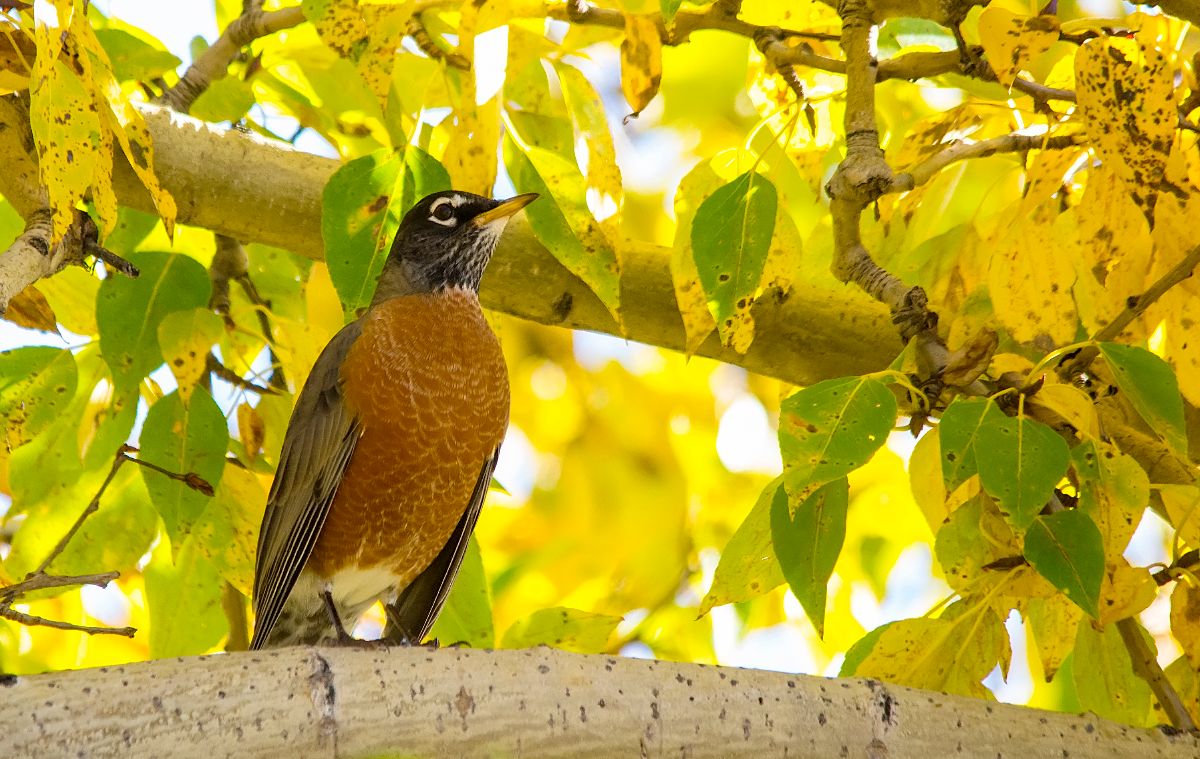 American Robin – [exif id=”14915″]
American Robin – [exif id=”14915″]
European Starling – [exif id=”14927″]
The Ring-billed Gulls are also one of the most numerous birds we find along the canal, aside from waterfowl, and until recent years, we’ve almost always had Bonaparte’s Gulls. We’re always on the look out for something a little more unusual, but so far we’ve failed to turn up anything less common.
Ring-billed Gull – [exif id=”14920″]
The main draw along the canal are the ever-present Hooded Mergansers. It’s not unusual to find at least a few males and at least a couple females cruising around feeding on the small invertebrates and fish in the main channel of the canal.
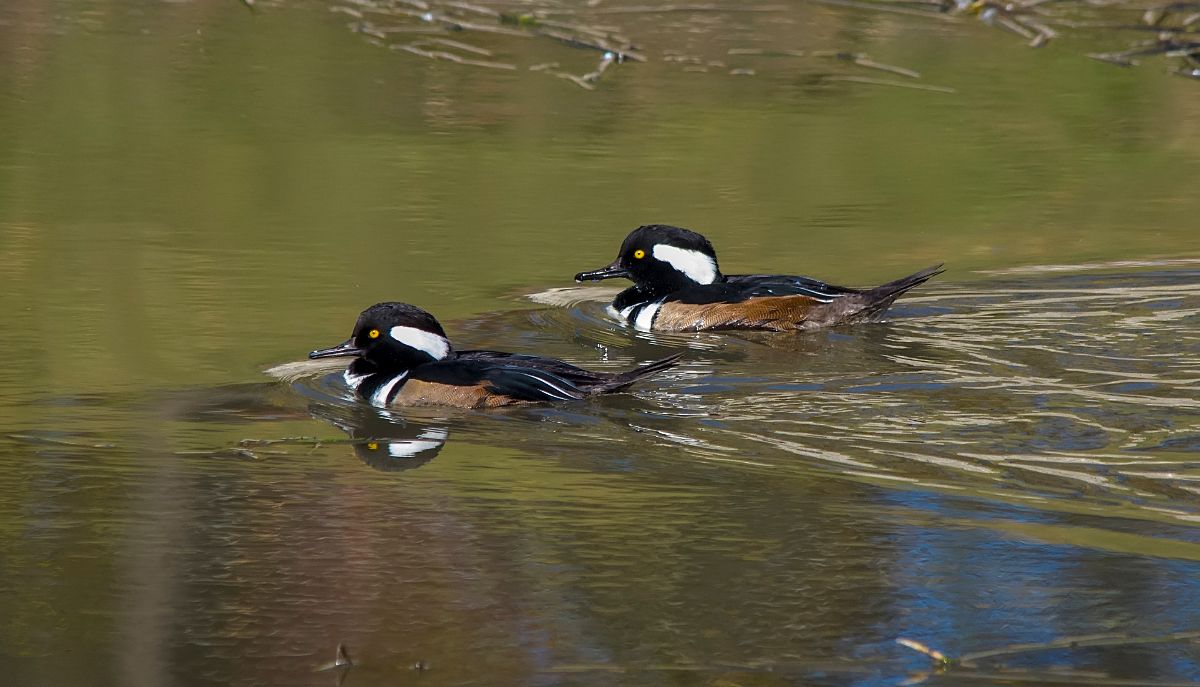 male Hooded Mergansers – [exif id=”14919″]
male Hooded Mergansers – [exif id=”14919″]
male Hooded Mergansers – [exif id=”14918″]
female Hooded Mergansers – [exif id=”14911″]
This late in the season we also get a good number of Greater Yellowlegs (and very rarely an occasional Lesser Yellowlegs). Even more interesting are the occasional falcons and raptors hunting them, like this female Merlin that took a dive at a large group of yellowlegs, flushing the majority of them!
Greater Yellowlegs – [exif id=”14917″]
female Merlin – [exif id=”14913″]
female Merlin in flight – [exif id=”14914″]
In addition to the Merlins we saw on both days at the canal, on the 8th we had a couple of interesting fly-overs. A Rough-legged Hawk and an immature Golden Eagle soared over on some high thermals, offering a few opportunities for us to identify them from below. Golden Eagles aren’t particularly common within the city limits, so my first thought was that it was an immature Bald Eagle. After reviewing the photos though, it was most certainly a Golden, which was quite an exciting find! Those broad, squared off wings, golden nape, and white patches in the middle of the underwing are really good features to look for on an immature Golden Eagle.
Rough-legged Hawk – [exif id=”14922″]
Golden Eagle – [exif id=”14921″]
New for me this year was a bit of variety in the makeup of shorebirds, with a fair number of Long-billed Dowitchers making an appearance, which we identified by their flight calls, and a lone American Golden-Plover, which is yet another relatively rare bird in the area, especially within the city limits!
Long-billed Dowitchers – [exif id=”14923″]
American Golden-Plover and Greater Yellowlegs – [exif id=”14924″]
American Golden-Plover – [exif id=”14924″]
Our last bird of the day, and maybe the last members of this species of the season, were a small number of Double-crested Cormorants. While these birds are fairly uncommon around the city, they’re not quite as loathed here as they are in eastern Canada, so most of us still enjoy seeing them from time to time along the Bow River.
Double-crested Cormorant – [exif id=”14916″]
While there aren’t usually too many mammals along this route, we did find a lone Muskrat on both of our outings, in almost exactly the same spot north of the Gosling Way bridge over the canal. He (or she) was foraging and collecting grasses and stems to store away for the winter.
Muskrat – [exif id=”14909″]
And that’s it for another week here on the blog. Have a great one, and good birding!
Posted by Bob Lefebvre
For week three and week four of the Friends of Fish Creek fall birding course, we explored three areas in the east end of the park along the bow river: The Park Headquarters and the Boat Launch/Sikome Lake area on September 20, and the Mallard Point region on September 27. Once again Dan Arndt was away so I filled in for him for the first walk, but a back injury caused me to miss the Mallard Point walk. George Best and Rose Painter attended both walks as leaders, and once again George provided the photos.
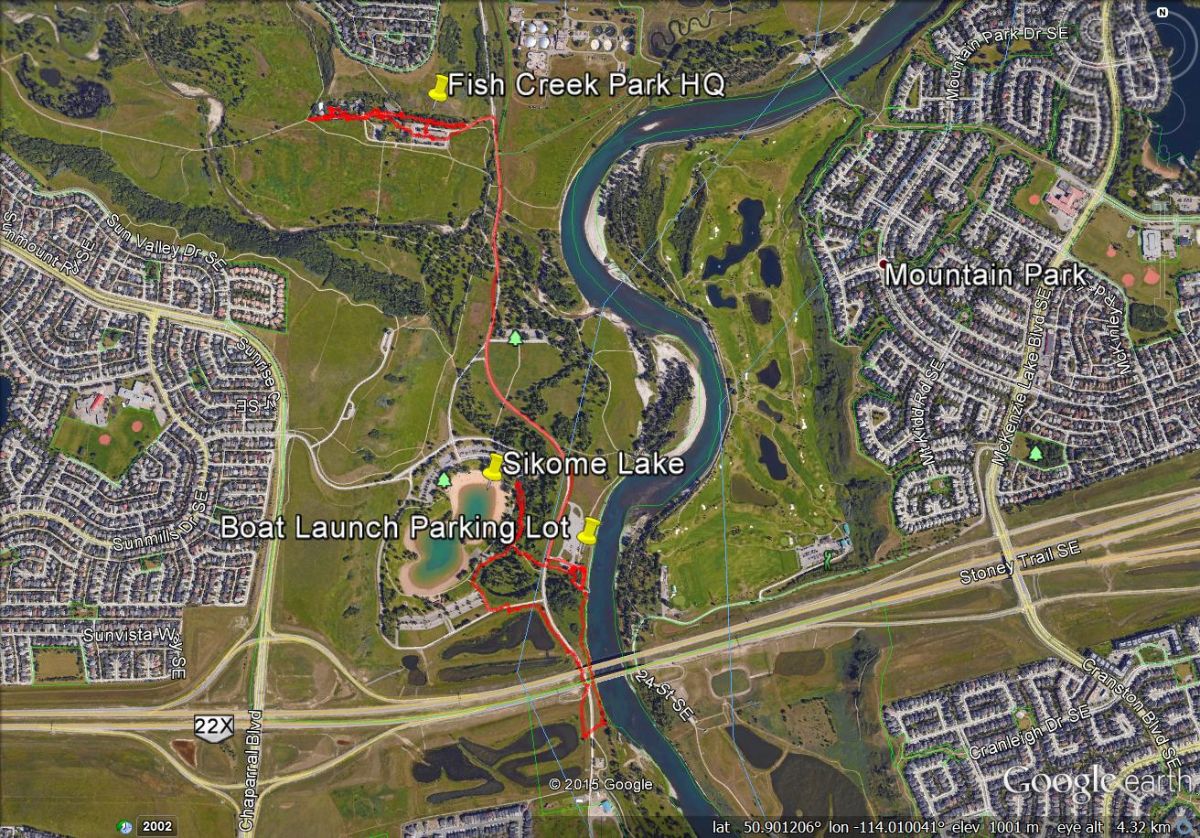
Our route on September 20. We drove between the the HQ and the Boat Launch.
Beginning at the headquarters, we looked unsuccessfully for the resident Great Horned Owls in the double row of spruce trees by the parking lot. They roost here in the daytime in the winter, but it may be too early for that. We did see a flock of American Goldfinches and quite a few Pine Siskins in the spruces farther west. All photos by George Best.
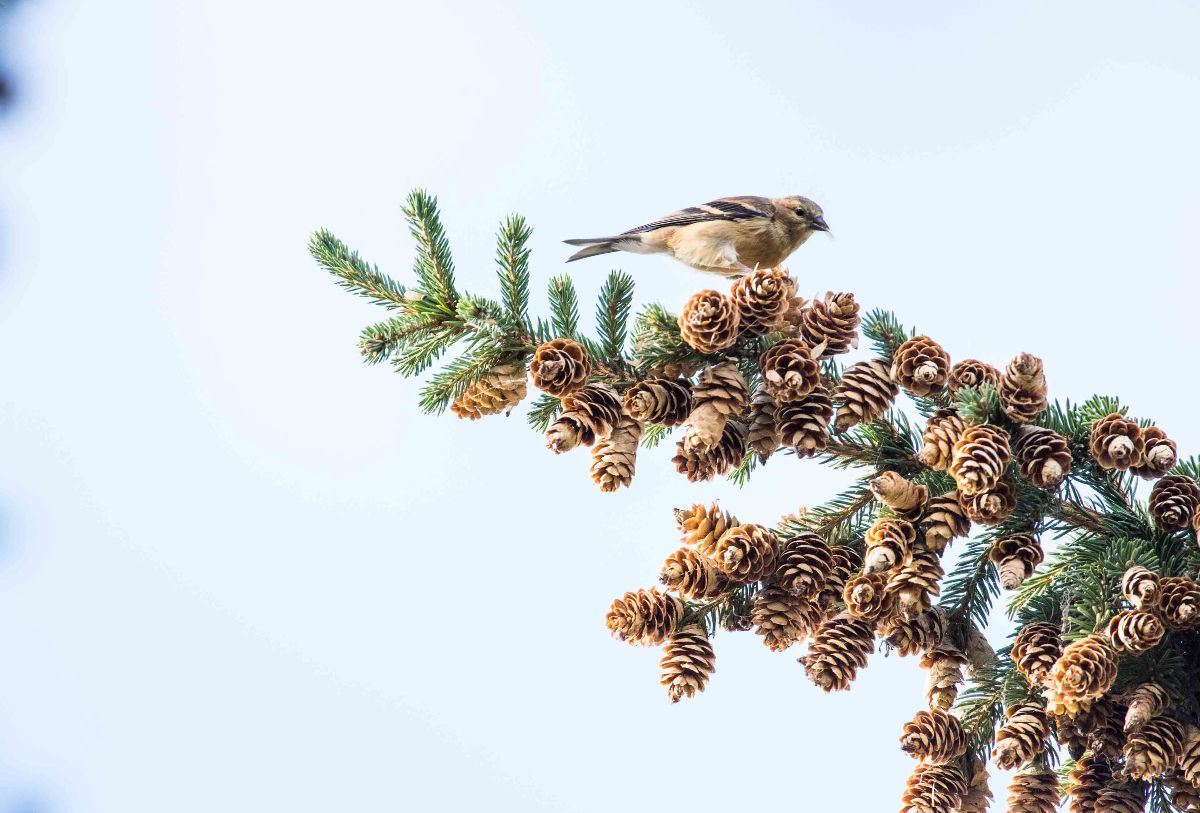
American Goldfinch.
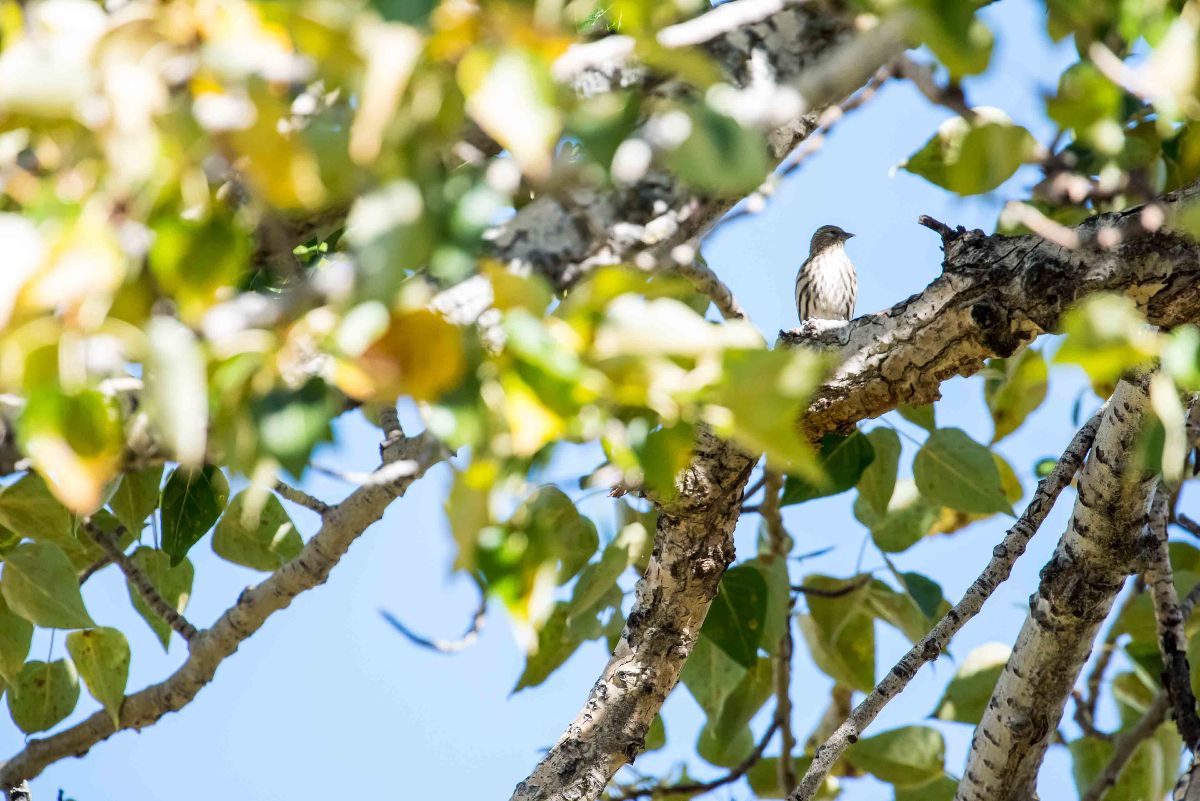
Pine Siskin. There are quite a few of these erratic birds in the city right now.
After driving over to the boat launch, we scanned the river. On a gravel bar to the north was a lone pelican with some Ring-billed Gulls.
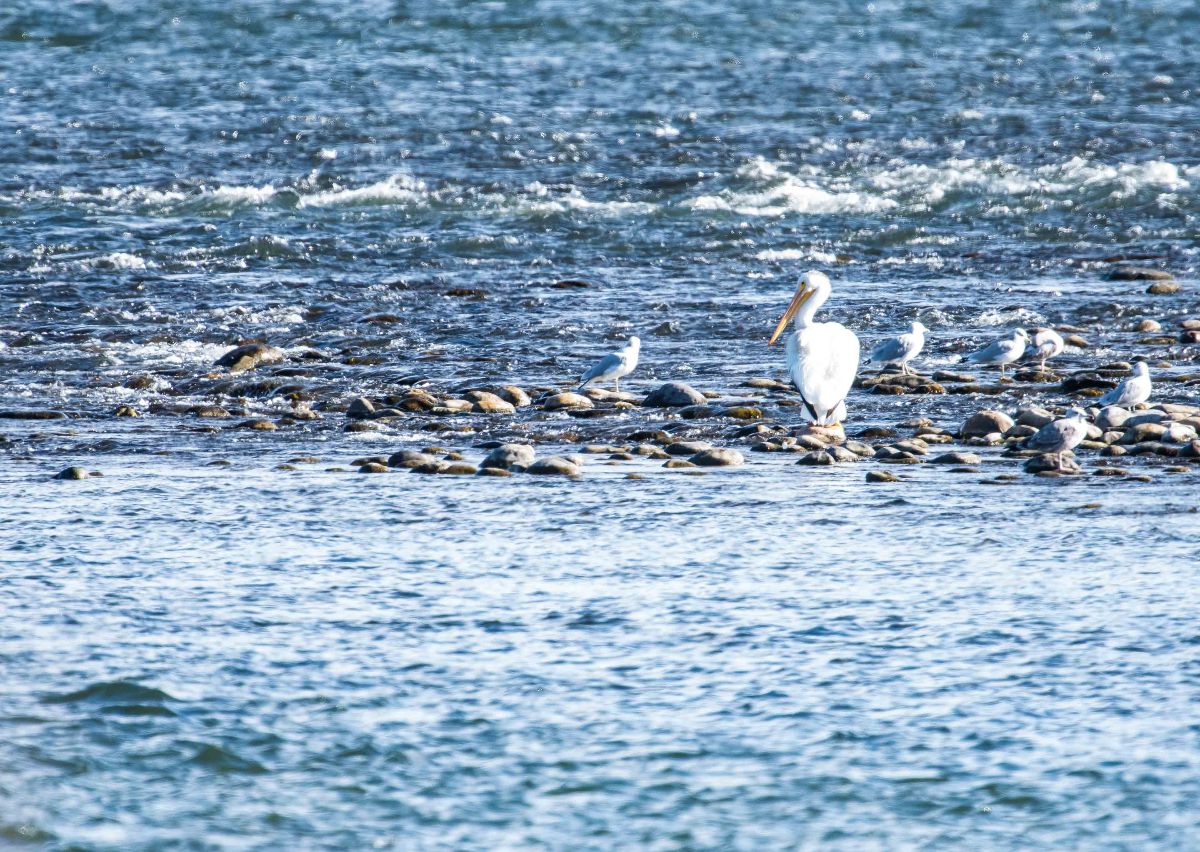
American White Pelican.
A little later in the walk, we were treated to a low flyover by a small flock of these enormous birds. This was the highlight of a quiet day.
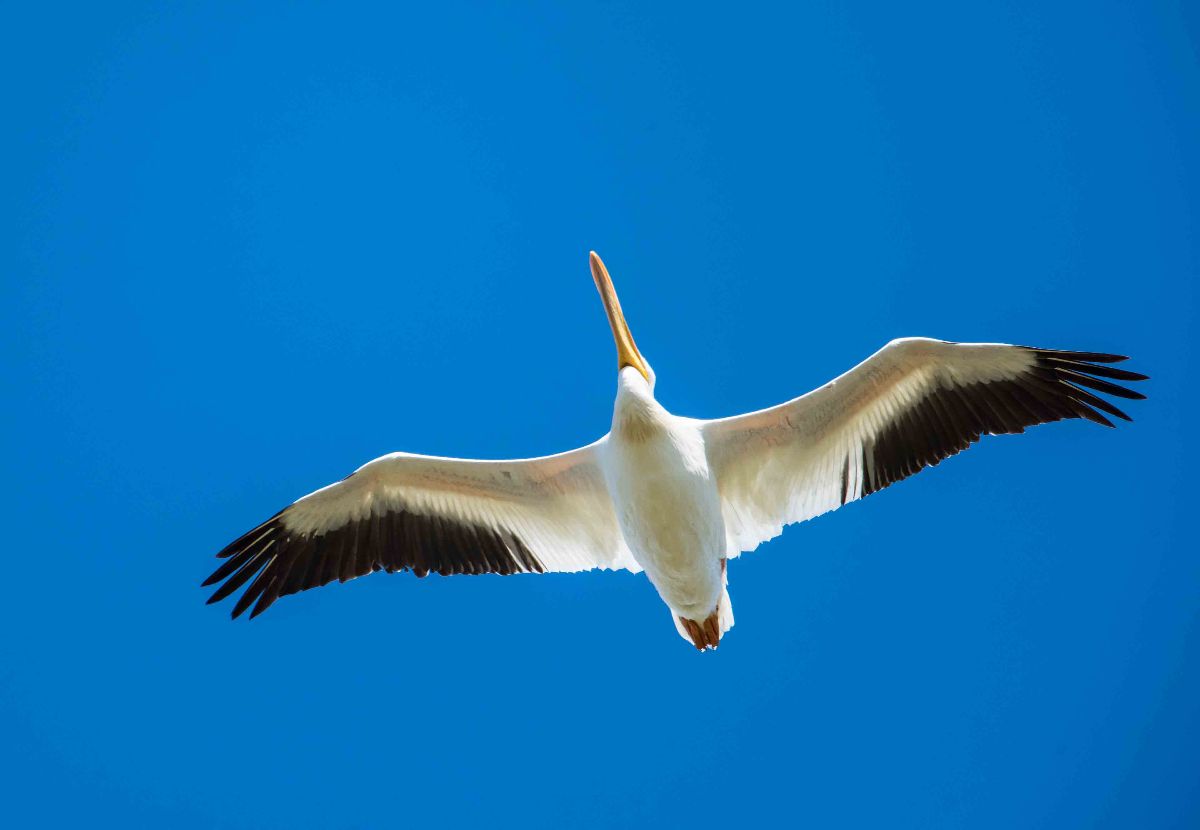
American White Pelican in flight.
The woods near Sikome Lake were quiet (no owls seen here either) so we checked the ponds near the highway 22X bridge. Here we saw this pair of Horned Grebes.
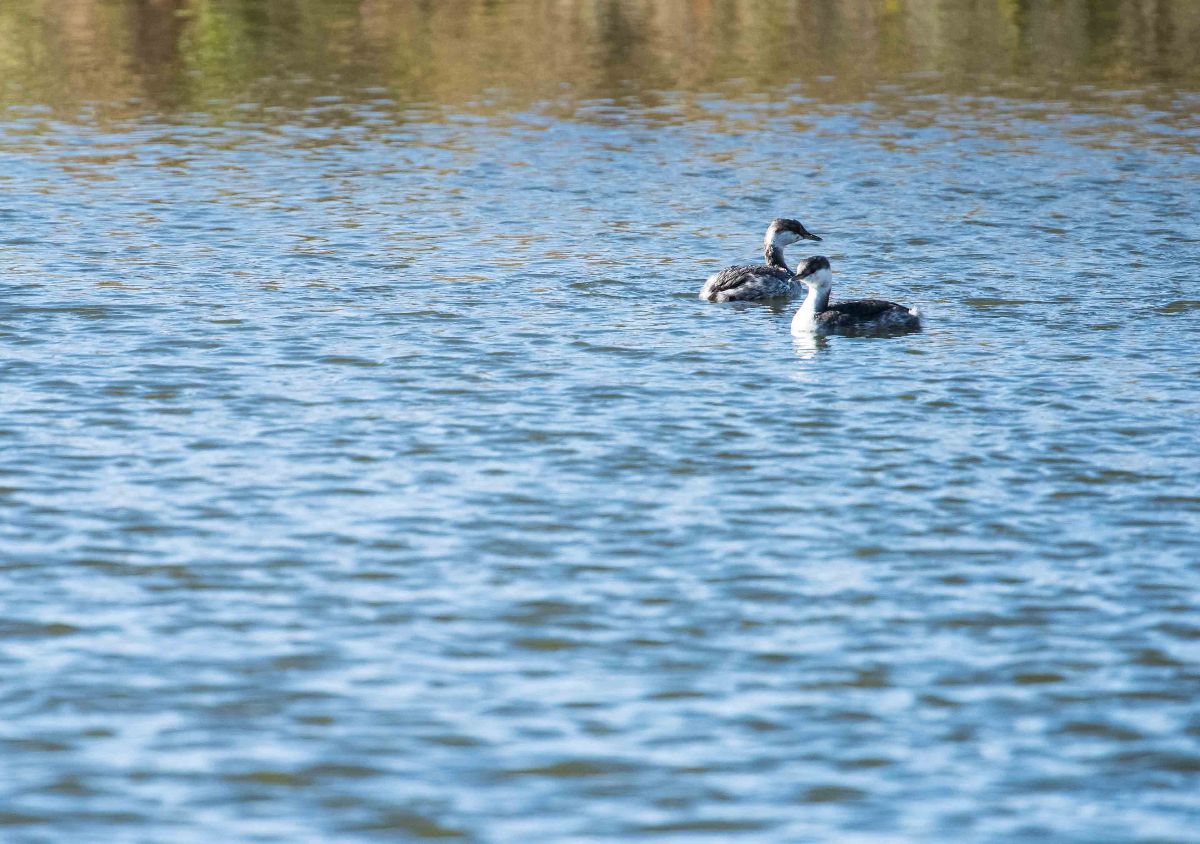
Horned Grebes.
The following week, as I said, I wasn’t able to attend, but George was there twice, on Monday and the following Sunday, and he got some great photos.
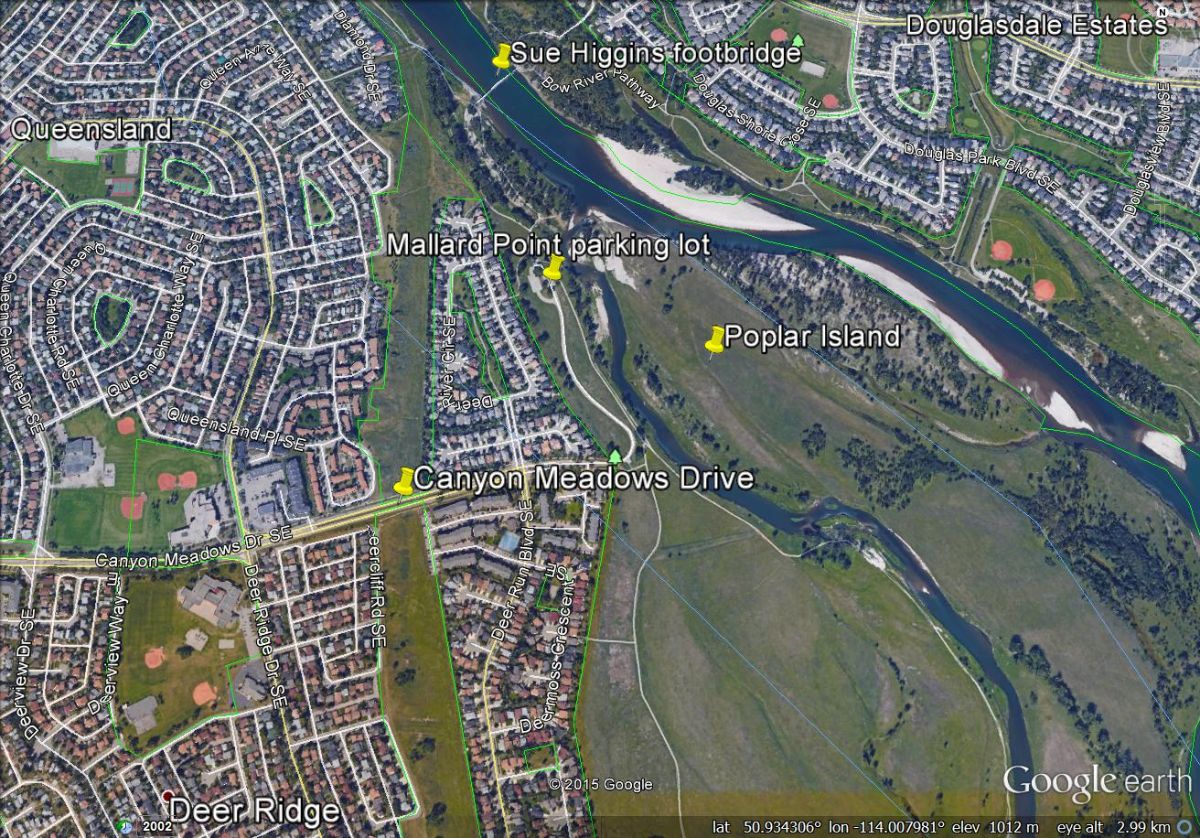
The Mallard Point area. The group explored a bit of the channel between Poplar Island and the parking lot, and crossed the Sue Higgins bridge and walked south along the east side of the Bow River.
Here are some photos from September 21:
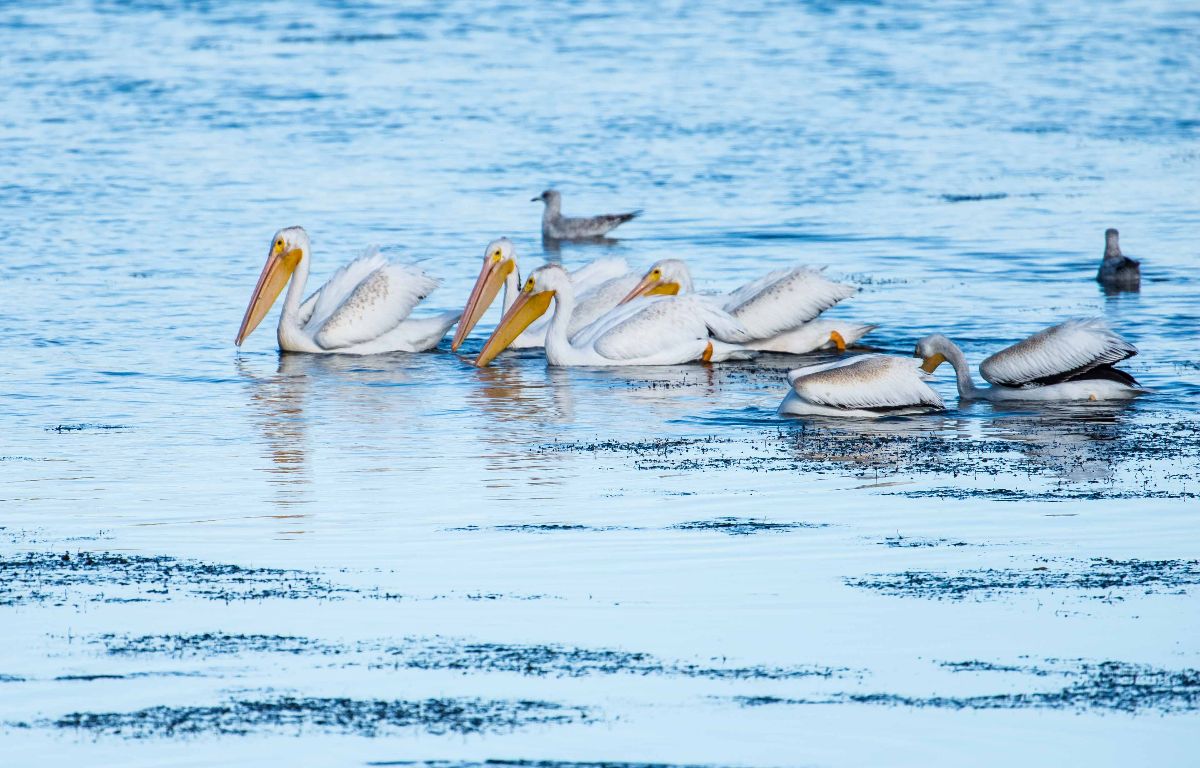
American White Pelicans.

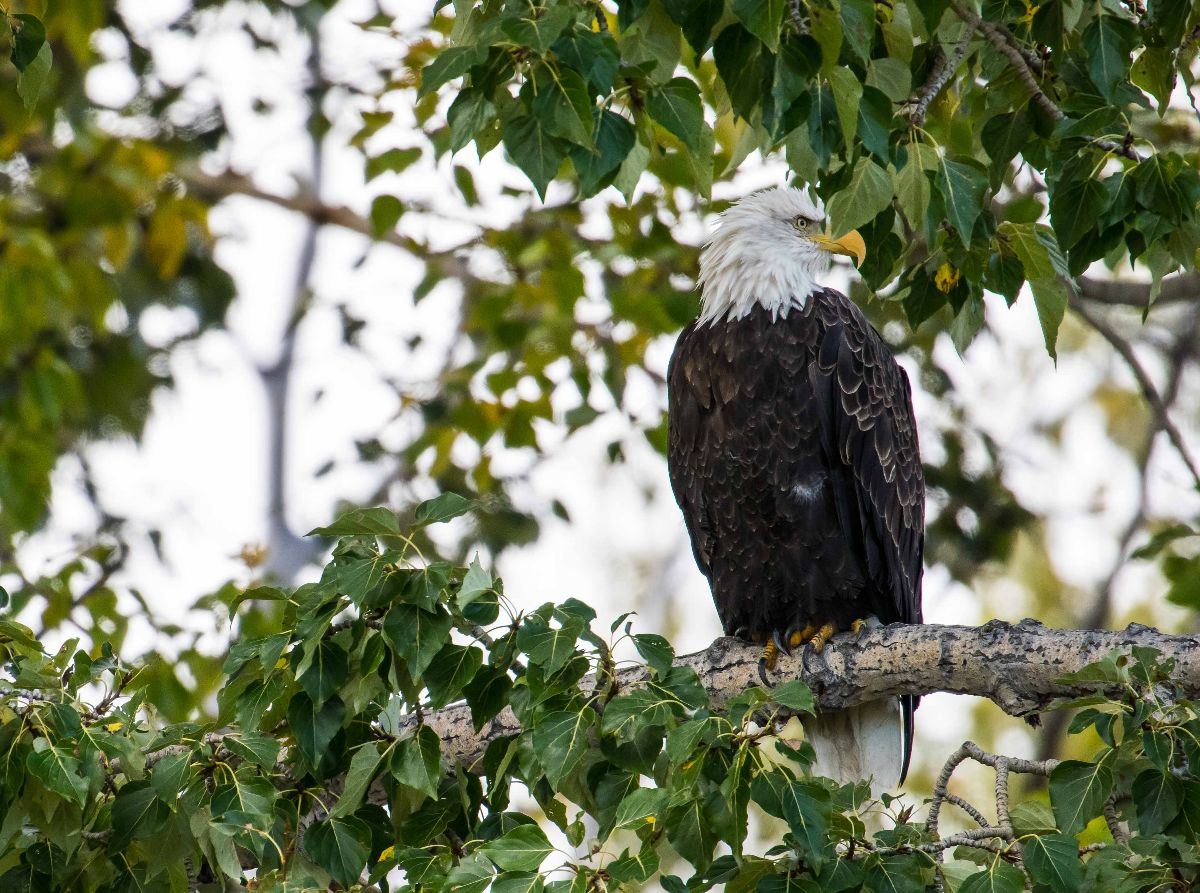
adult Bald Eagle.
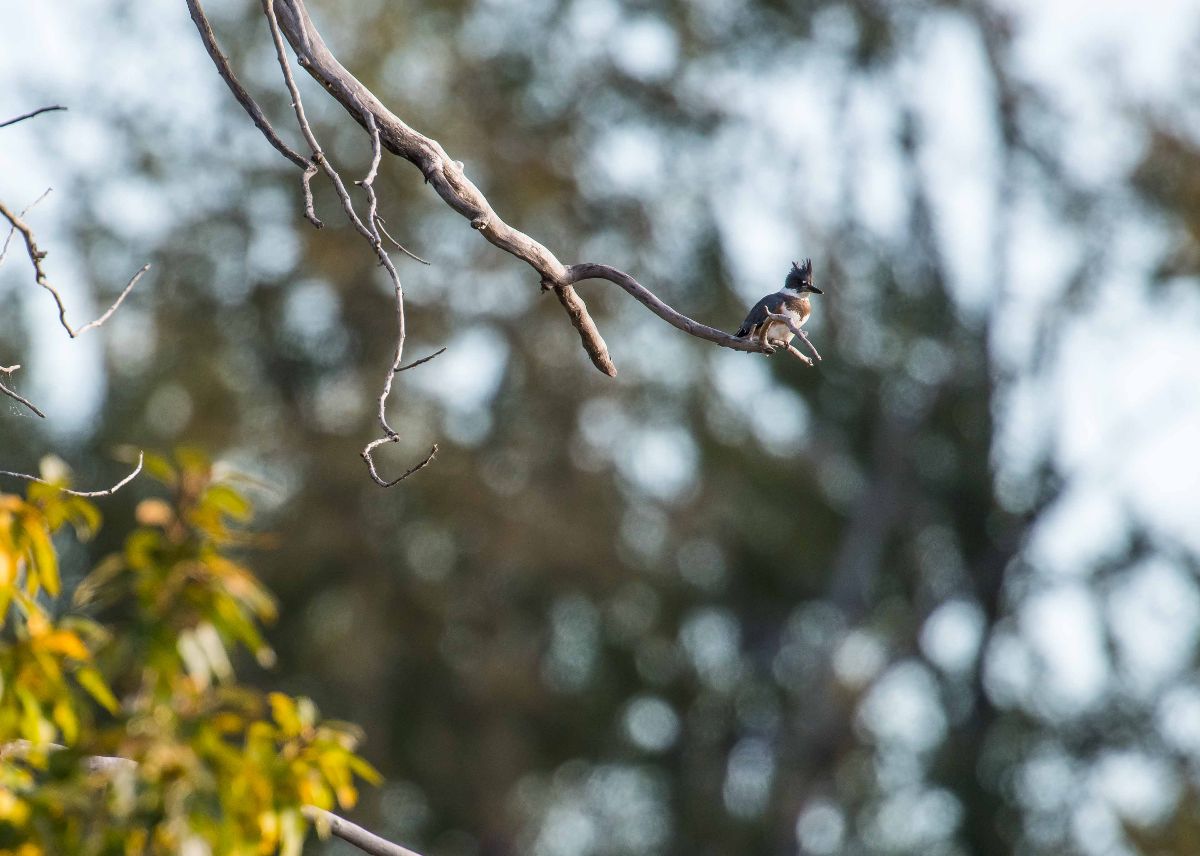
female Belted Kingfisher.

Merlin.
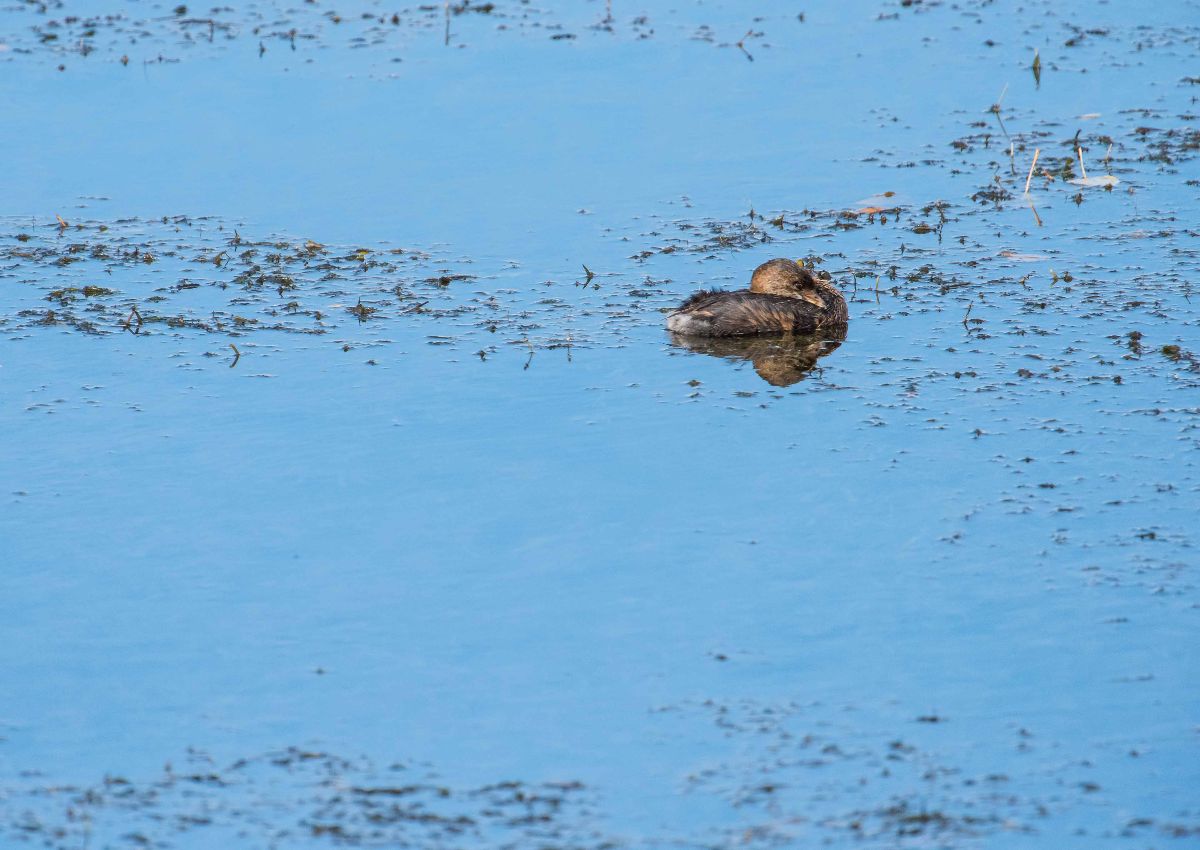
A resting Pied-billed Grebe.
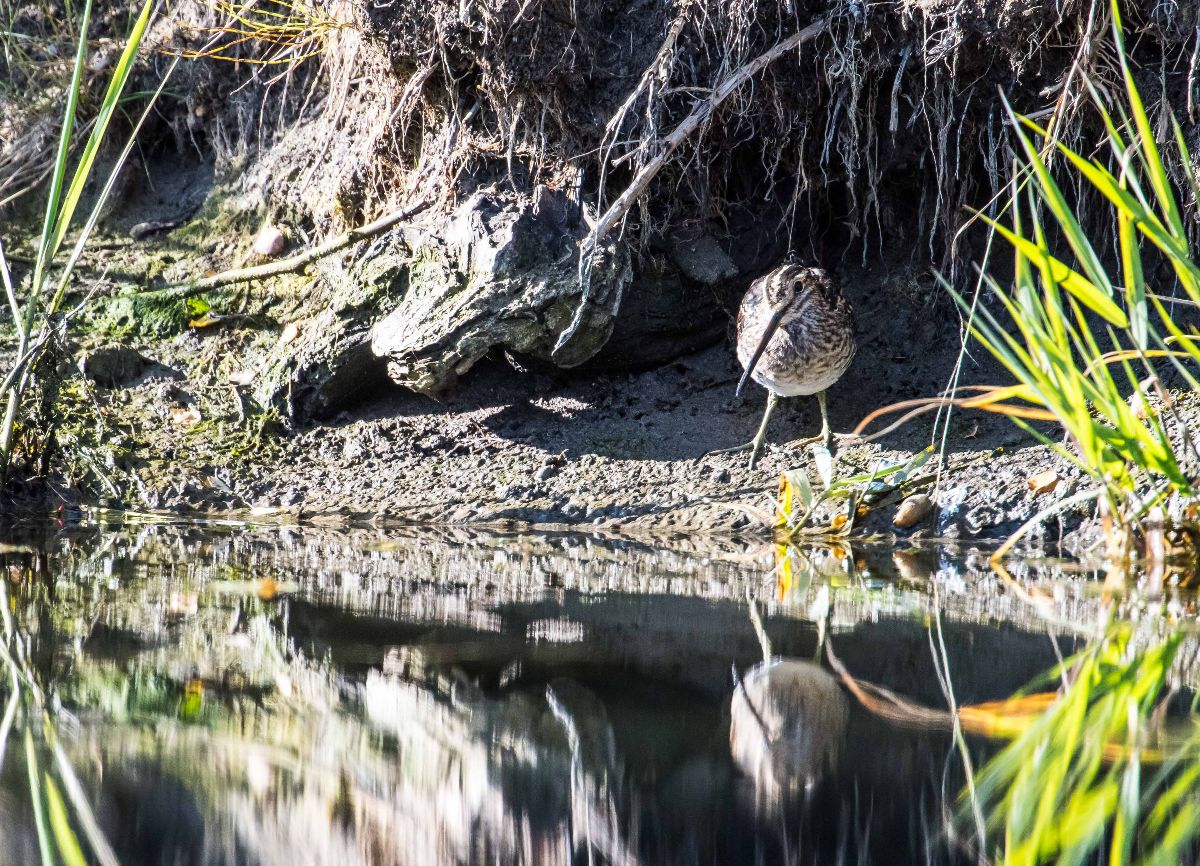
Wilson’s Snipe.
Below are three shots from September 27:
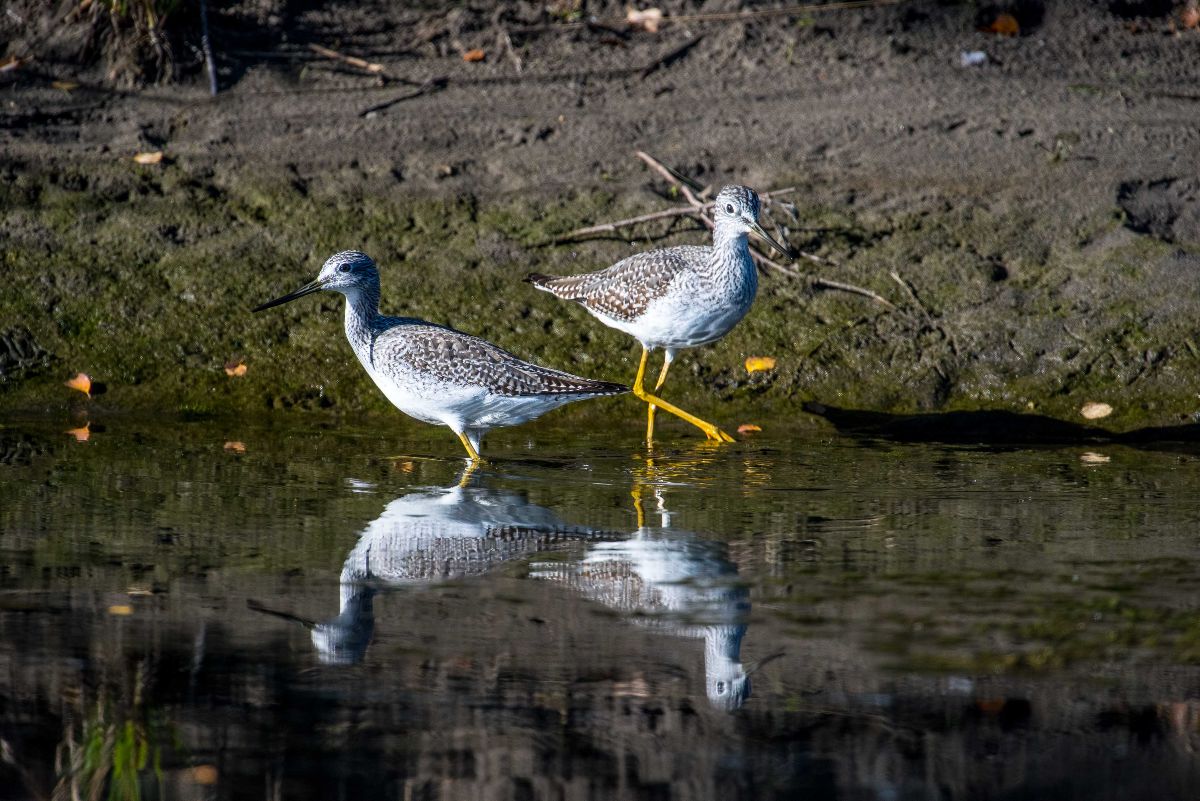
Greater Yellowlegs.
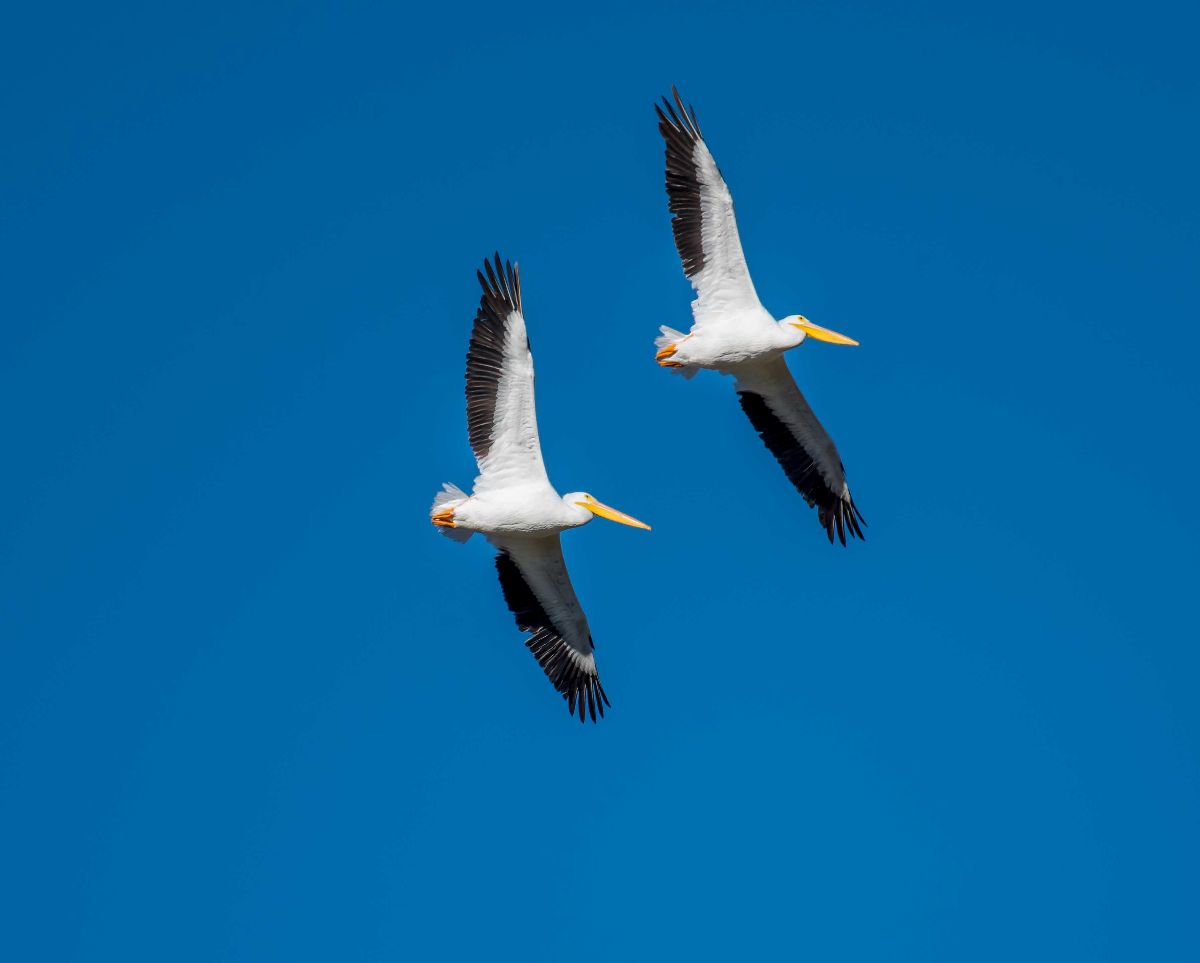
American White Pelicans.
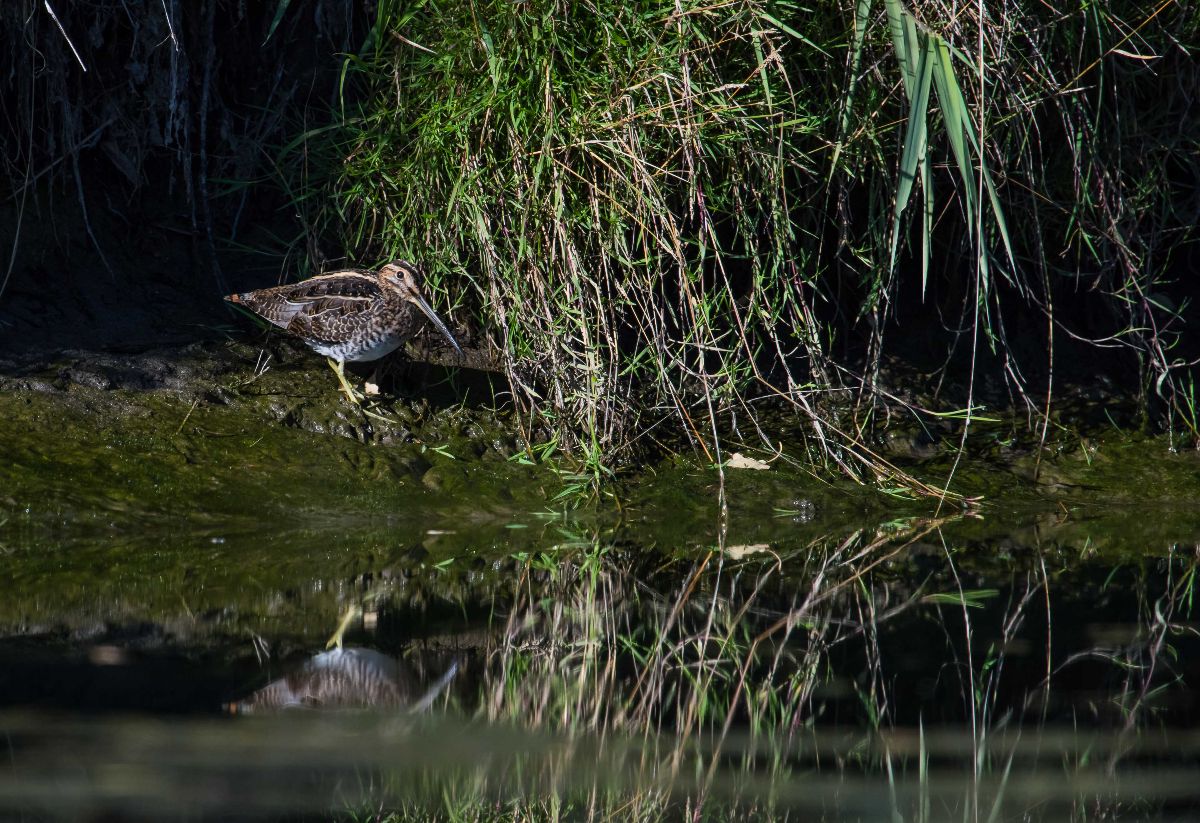
Wilson’s Snipe.
Next post: Dan is back with his first report of the season. See which rarity we turned up in Lafarge Meadows.
Posted by Bob Lefebvre
In week two of the Friends of Fish Creek Provincial Park Society Autumn birding course we returned to the Inglewood Bird Sanctuary (IBS) for the first time since the flood of 2013. The sanctuary had been closed for over two years, but reopened in August. The trails along the river are still closed, but the area around the lagoons are accessible and remain a prime birding area in the city. Once again I filled in as leader for Dan Arndt, with the help of Rose Painter and George Best. George again provided the photos below, with one exception.
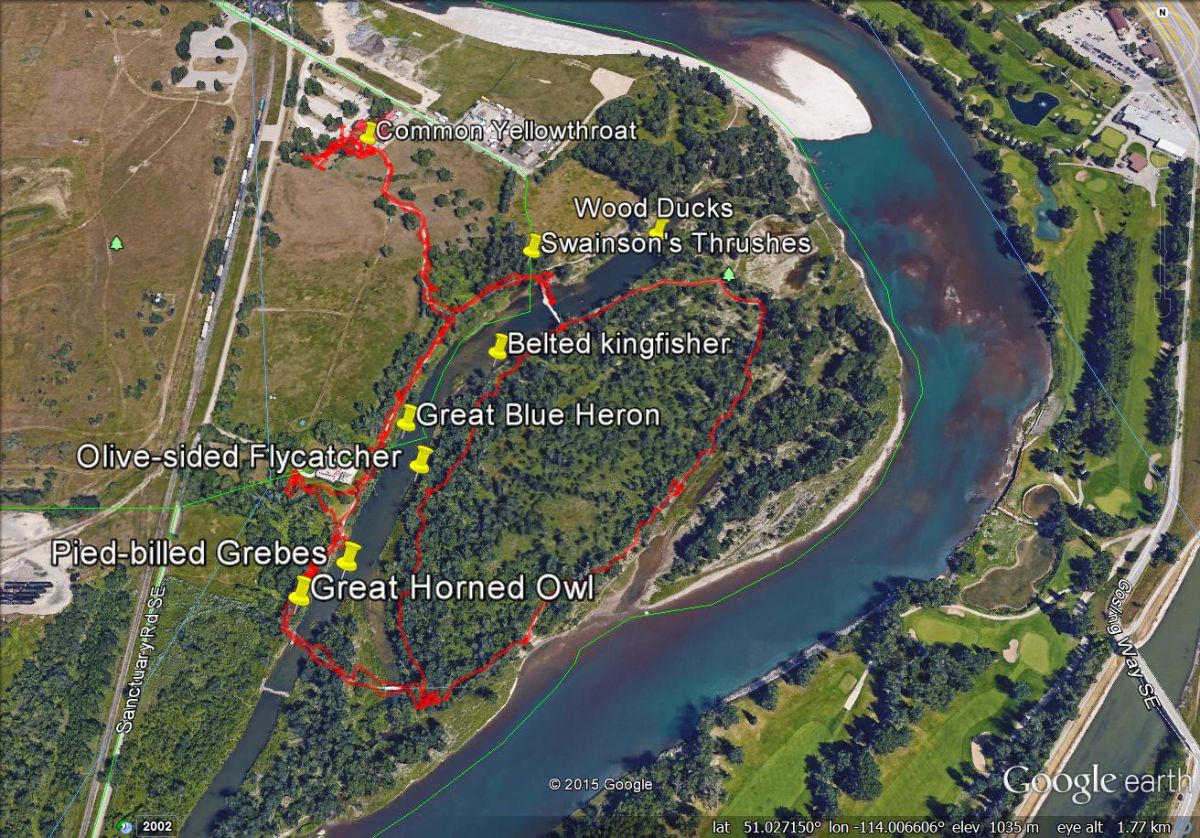
The Inglewood Bird Sanctuary, showing our route on September 13, 2015.
It is perhaps surprising that some of the best spots at IBS for migrating warblers and sparrows are the trees and bushes by the interpretive centre, right next to the parking lot. This area should not be overlooked during migration. When our Sunday morning group visited on September 13 we had one White-throated Sparrow, one Dark-eyed Junco, and a Tennessee, a Yellow-rumped, and an Orange-crowned Warbler before we entered the gate of the sanctuary.
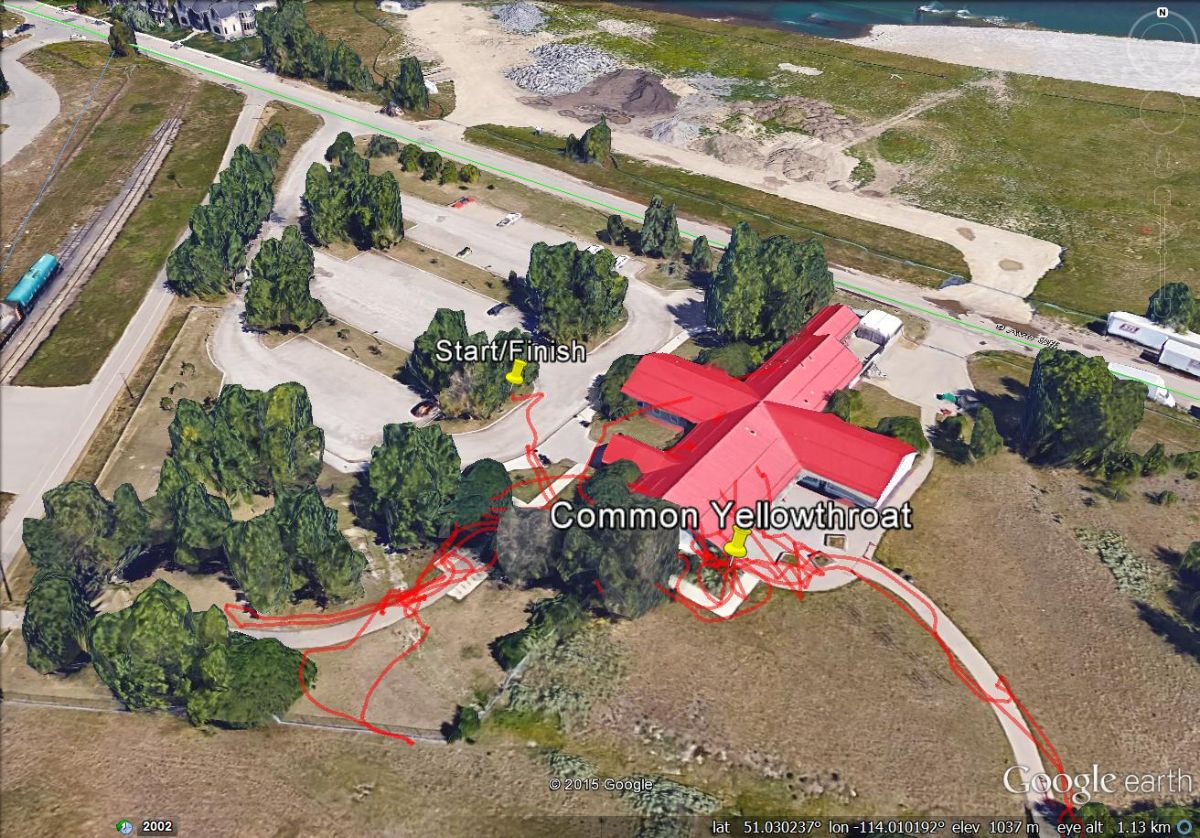
The parking lot and interpretive centre at IBS. We spent about 45 minutes in this area.
Immediately after we passed through the gate, a yellowish bird flew out of a low bush by the path, made a big circle, and collided with the glass door of the interpretive centre. I rushed over and picked it up, cupping it in both hands in an effort to keep it warm enough that it might revive (it was only 10 degrees Celsius out, and a stunned songbird could quickly die of hypothermia if not kept warm.) We tried to identify it while doing this. The bird had a large white patch on its head and a smaller one on its nape which confused us at first. But rather than an exotic warbler that we weren’t familiar with, it was a Common Yellowthroat with a touch of leucism (missing pigments in some feathers).

Common Yellowthroat with leucism, unable to fly after colliding with a window. Photo by Rose Painter.
[exif id=”14855″]
It took about fifteen minutes before the bird revived, and it finally flew weakly back to the same bush it originally flew out of. Three hours later, at the end of the walk, it was still there, moving about in the bushes, and easily identifiable by the white patches on its head.
When we finally entered the sanctuary proper, we circled the lagoon, where the majority of the other birds were sighted. Wood Ducks are one of the highlights here, as they are quite scarce anywhere else in the city. There are usually between 20 and 45 Wood Ducks on the lagoon from spring to late fall. All photos below by George Best.
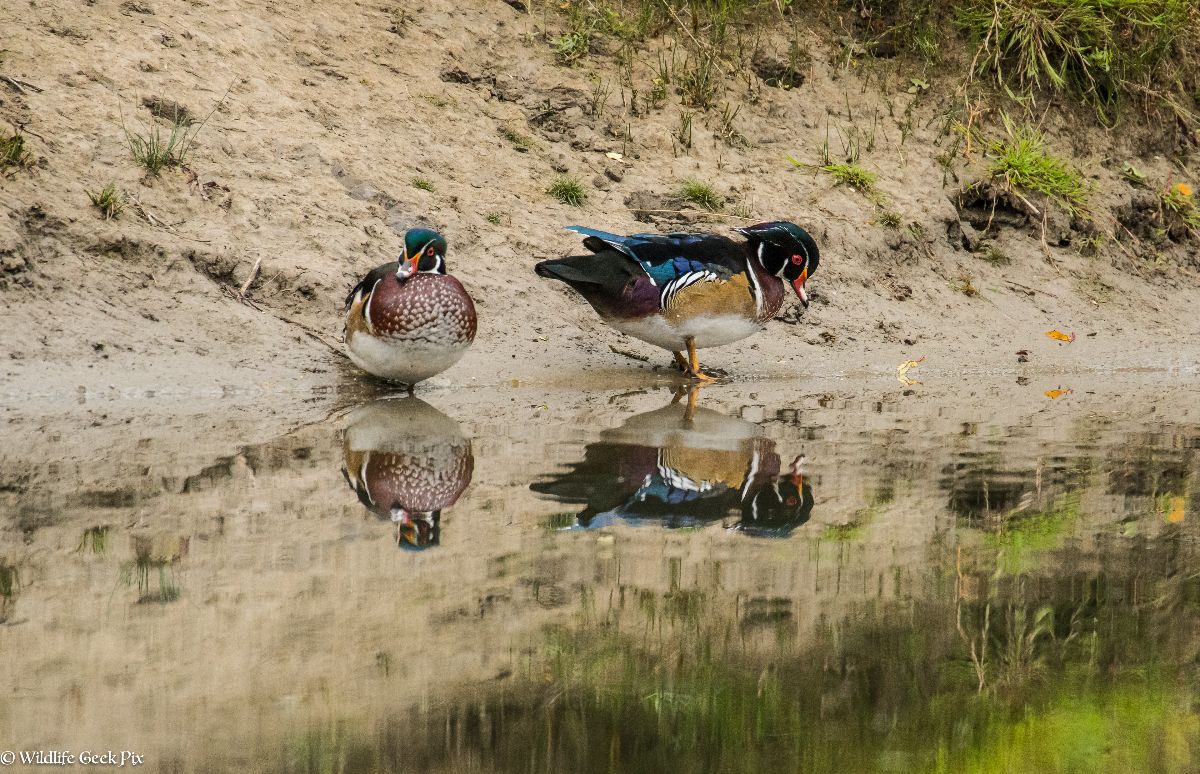
Male Wood Ducks, already back in breeding plumage after their late-summer molt.[exif id=”14854″]
A species we see rarely in the summer but quite often in the fall on quiet bodies of water is the Pied-billed Grebe. There were two on the lagoon throughout the week.
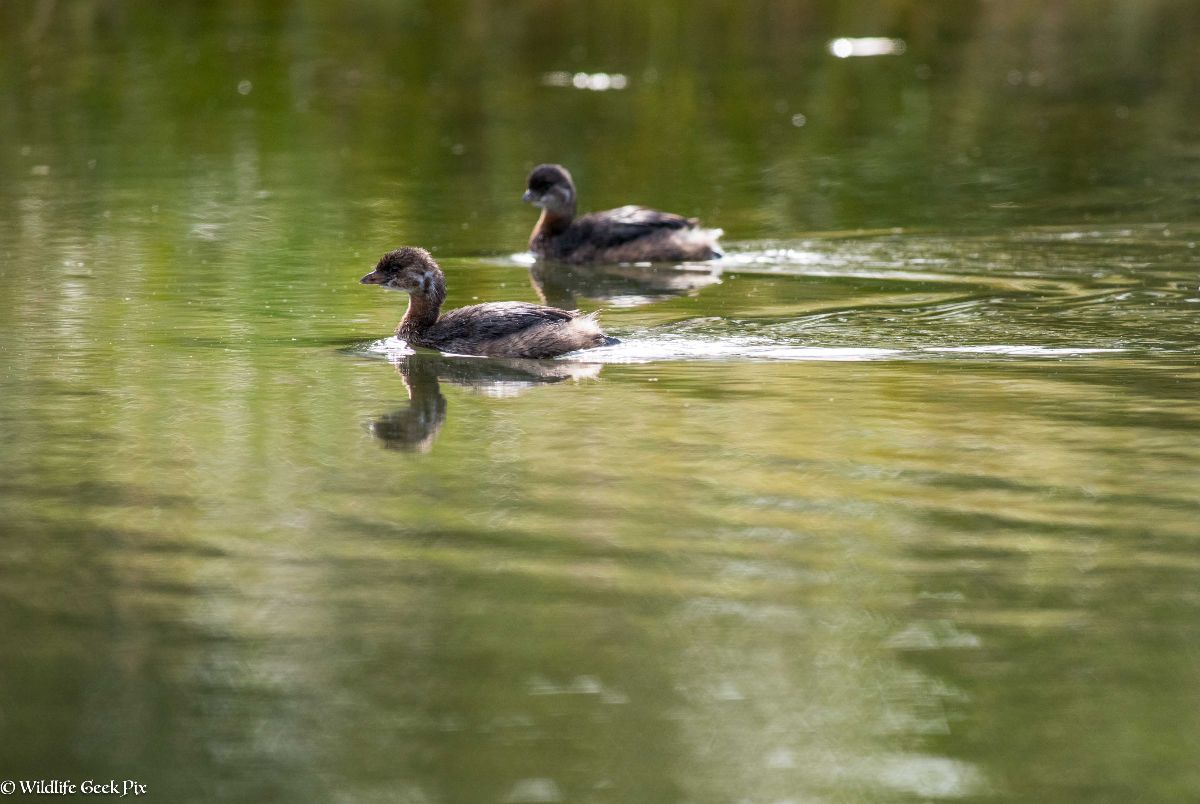
Pied-billed Grebes. [exif id=”14852″]
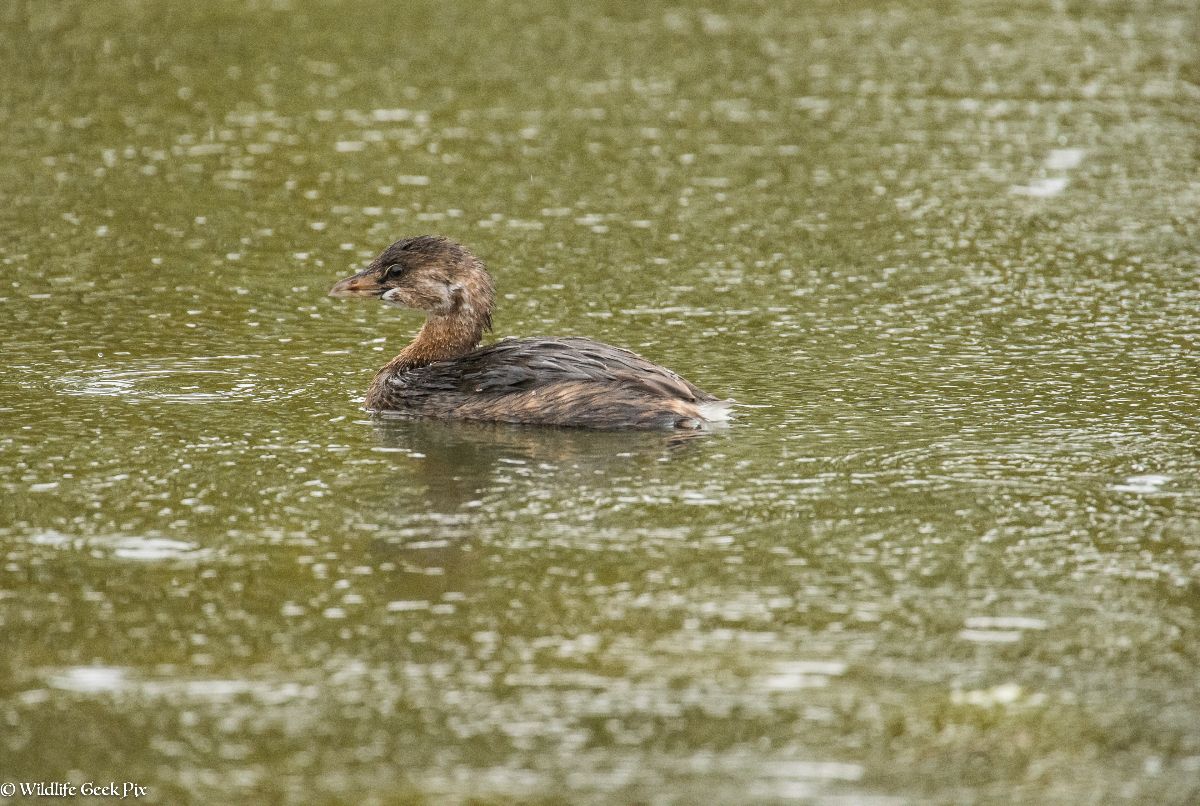
Pied-billed Grebe. [exif id=”14851″]
Great Blue Herons are another star attraction at IBS. They are often perched high up in the poplars, where they can be surprisingly difficult to find for such a large bird. We saw three Herons: Two perched, and one in flight.
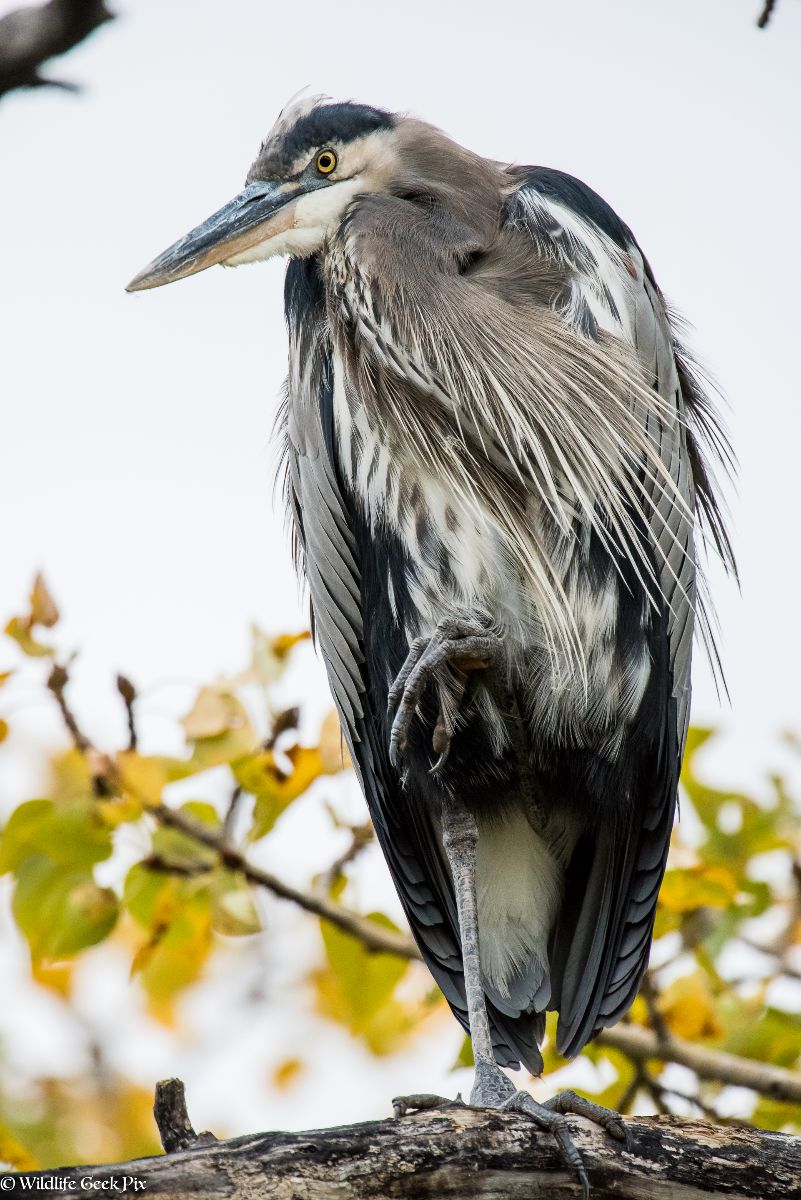
Great Blue Heron. [exif id=”14848″]
Belted Kingfishers are often rattling around the lagoon. We finally saw this female perched over the water after hearing it move around for quite a while. One or two of these birds usually stay here until very late in the fall, and they sometimes overwinter in the city.
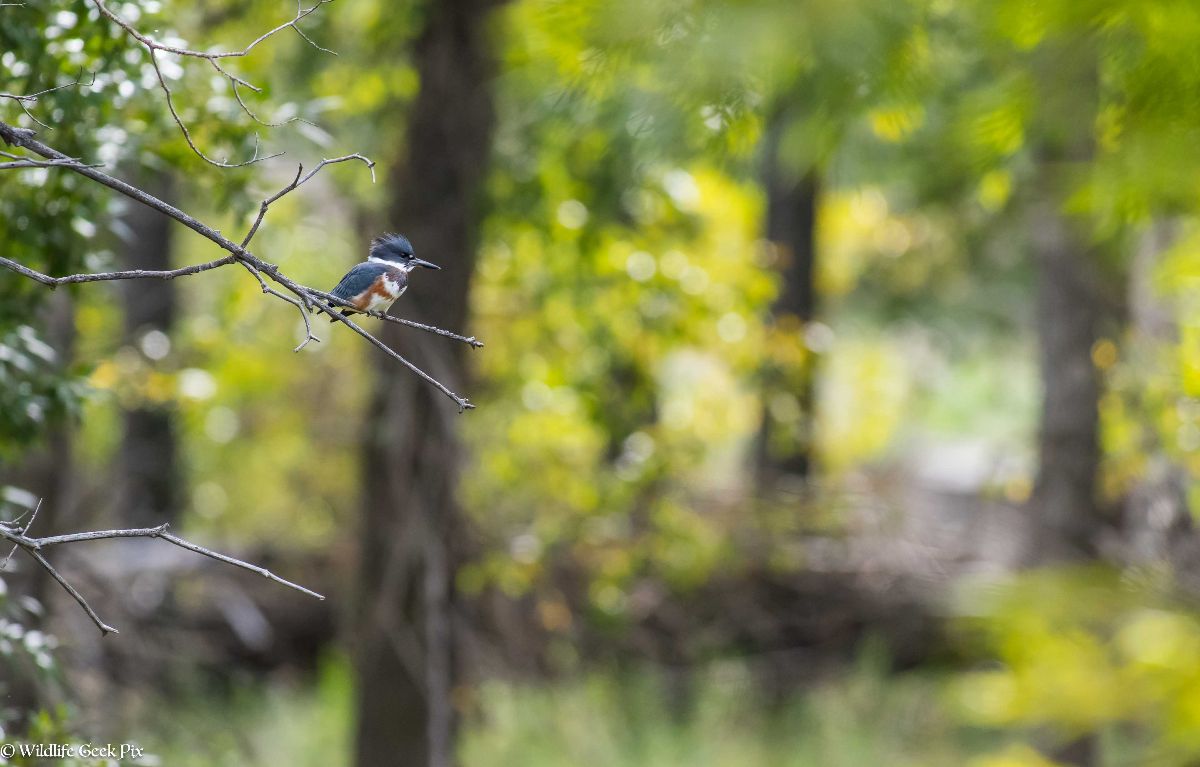
female Belted Kingfisher. [exif id=”14847″]
Down near the south end of the lagoon near the porcupine den we spotted this Great Horned Owl. They are generally always around the sanctuary somewhere, but can be really hard to find. The two adults that breed here were not yet at their winter daytime roost in the spruce trees by the Walker House. Perhaps this is one of them.

Great Horned Owl. [exif id=”14849″]
We tallied 36 species for the day, including a Cooper’s Hawk, a Bald Eagle, A Red-tailed-Hawk, two Swainson’s Hawks, a Merlin, and a Golden-crowned Kinglet. Many other species were seen by FFCPP groups earlier in the week. George attends on Mondays as well, and he took some more photos that day (September 7), as shown below.
Flycatching from a tall bare branch, which they typically do, was this Olive-sided Flycatcher. There were two by the lagoon. This species is only seen in the city on migration, though it breeds nearby in the foothills.
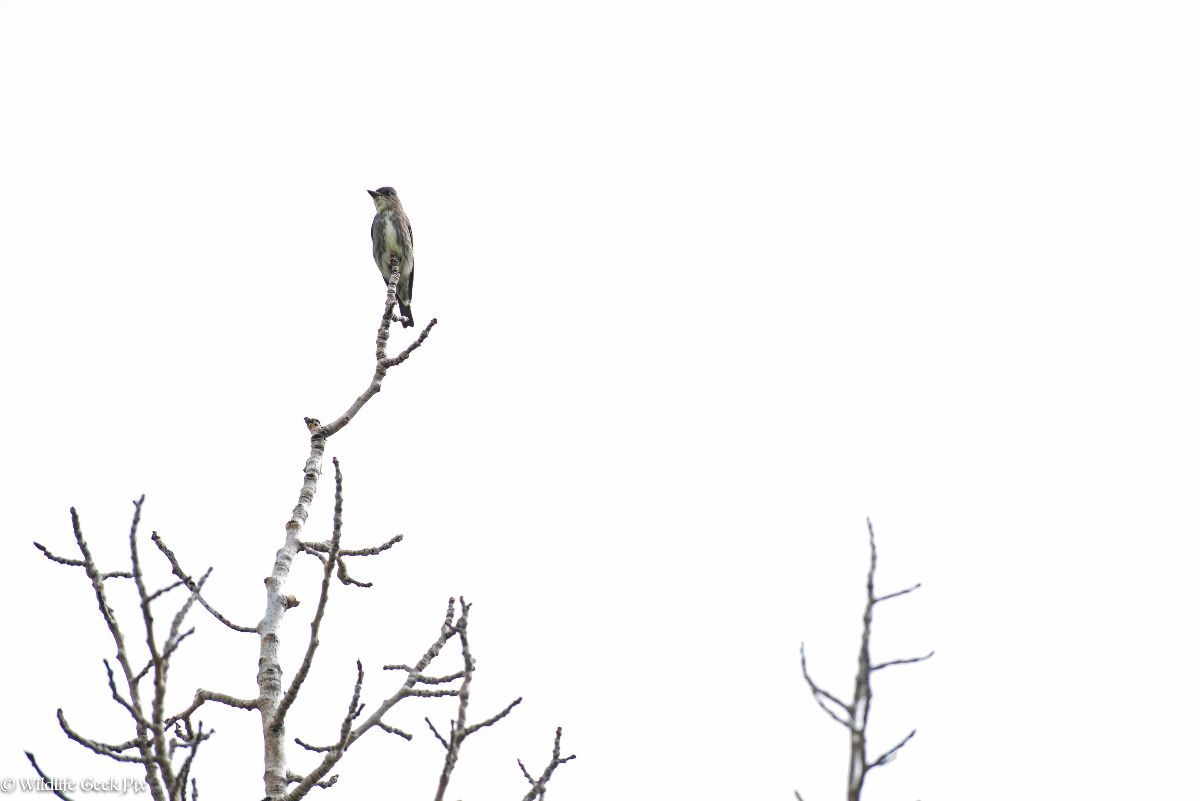
Olive-sided Flycatcher. [exif id=”14850″]
Swainson’s Thrushes were moving through on migration, and the group saw an incredible fifty-one that day! Below is a pair of these shy birds.
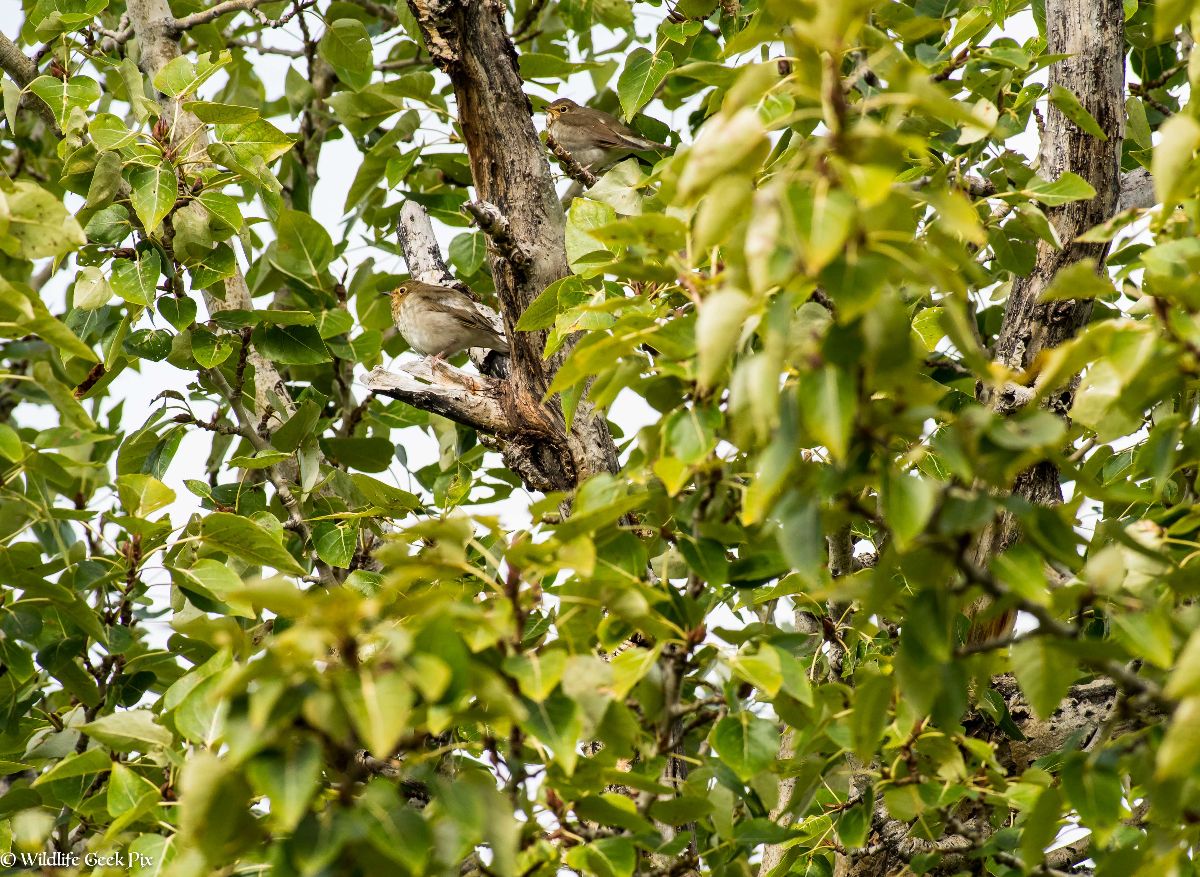
A pair of Swainson’s Thrushes. [exif id=”14853″]
Finally, a couple of shots of a beautiful migrating male American Redstart.
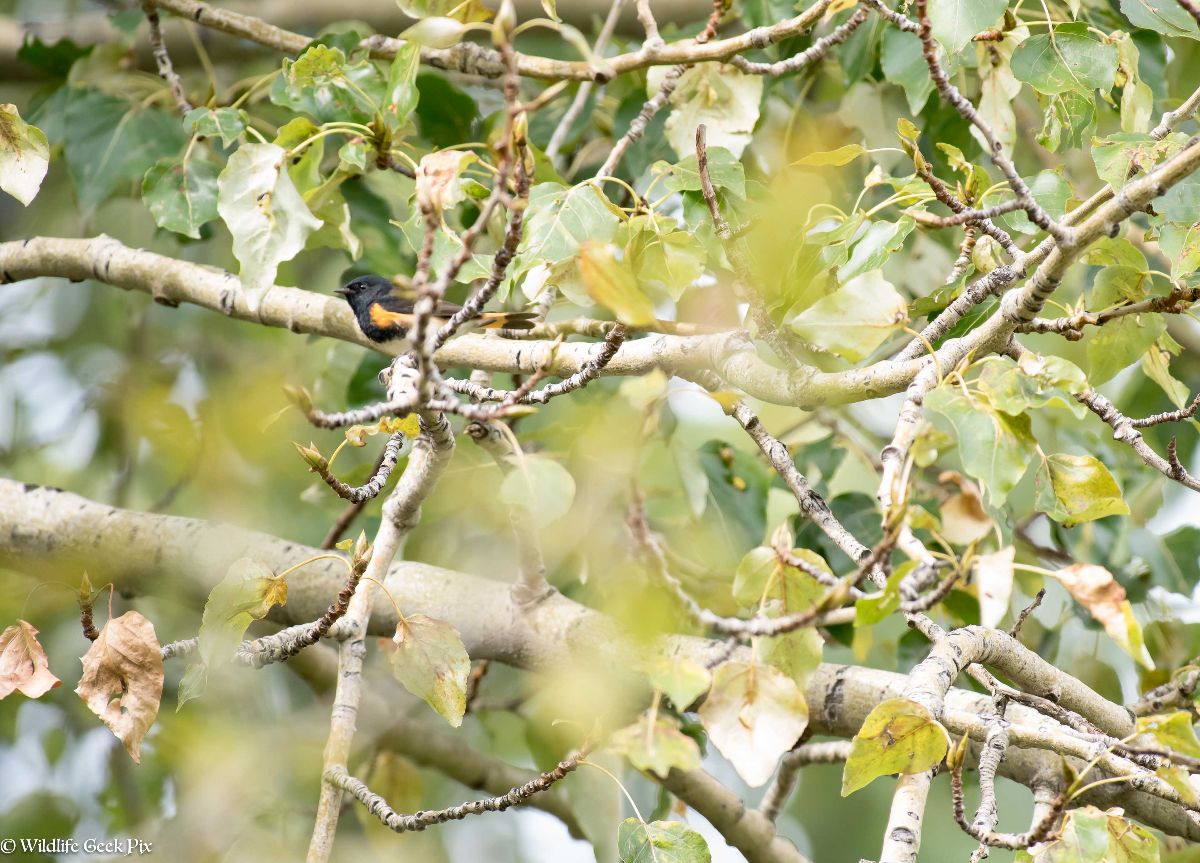
male American Redstart. [exif id=”14846″]
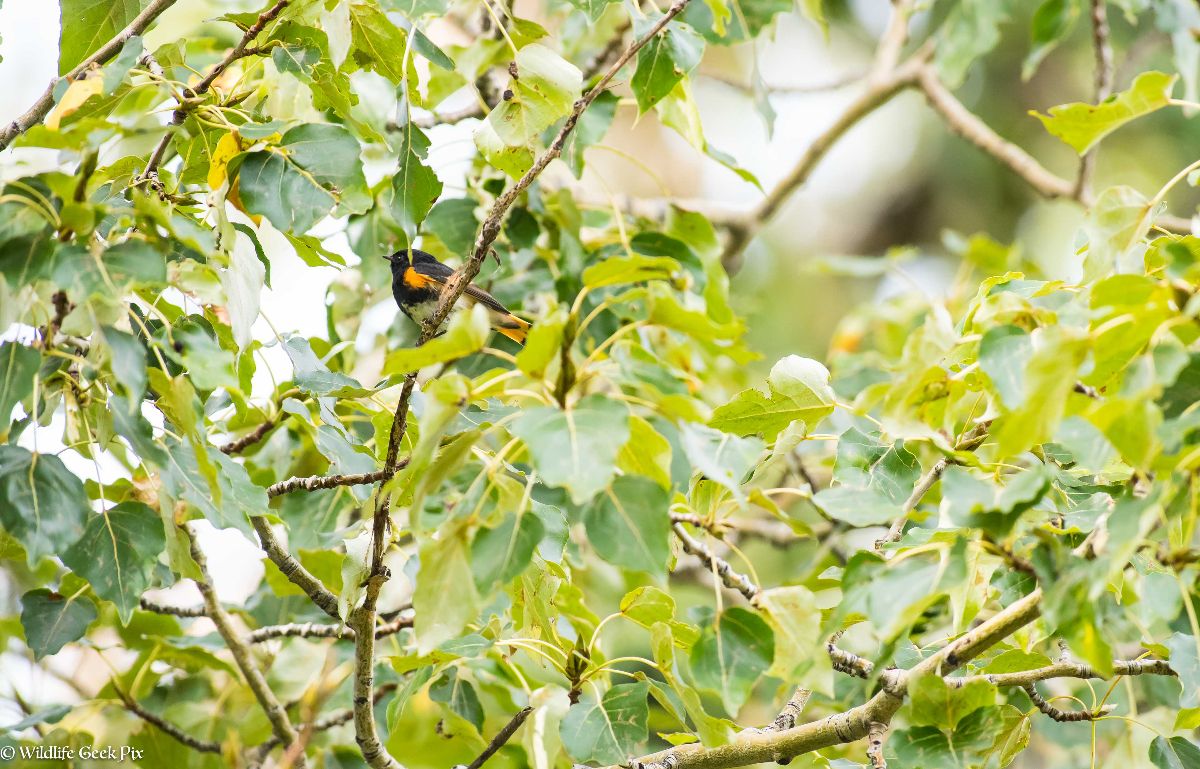
Another shot of the male American Redstart. [exif id=”14845″]
Next Post: We head down to the Fish Creek Park headquarters and the boat launch.
Posted by Bob Lefebvre
The Friends of Fish Creek Provincial Park Society Fall birding course began again on August 31, 2015. Many of our readers look forward to Dan Arndt’s posts every Monday with a narrative of the previous week’s outing accompanied by his outstanding photos of some of the birds seen. As usual Dan is scheduled to lead the Sunday morning group, one of the fifteen weekly outings that are needed to accommodate the 196 registered participants. However, work commitments will keep Dan away for many of the fall outings. With the help of Rose Painter and George Best, I will fill in for him when he is away.
I don’t usually carry a camera when helping to lead a group, but George does, and he is an excellent photographer as many of you know. I will try to summarize our walks and illustrate them with George’s photos.
For the first week of the course we went to Carburn Park, which had been a great spot for fall warblers in the weeks leading up to the start of the course. Many of the earlier-migrating species had more or less finished passing through Calgary by the beginning of September, but we hoped to see quite a few Wilson’s, Yellow-rumped, and Orange-crowned Warblers on our outing on September 6.
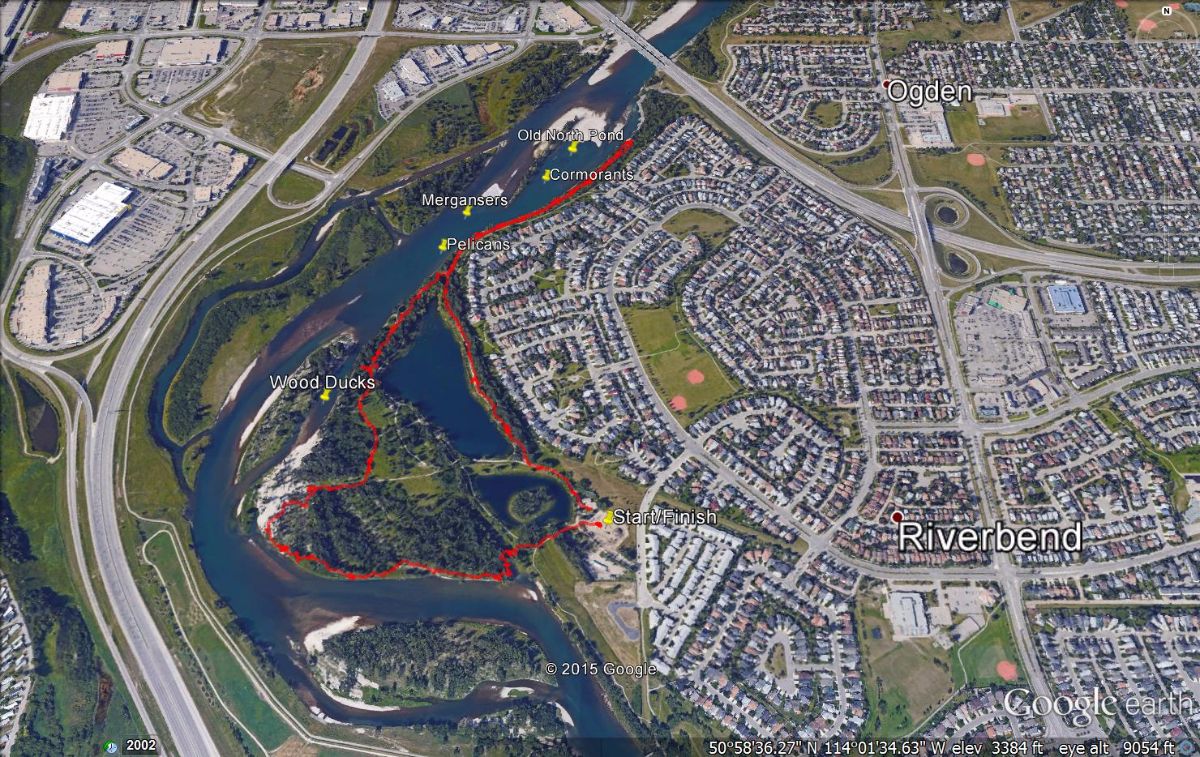
Carburn Park walk, 6 September 2015.
We did see about 30 Yellow-rumped and possibly one Yellow Warbler, but none of the other warbler species. However, we did see huge numbers of birds of the river, including the largest concentrations of Common Mergansers and Double-crested Cormorants that many of had ever seen. (All photos by George Best.)
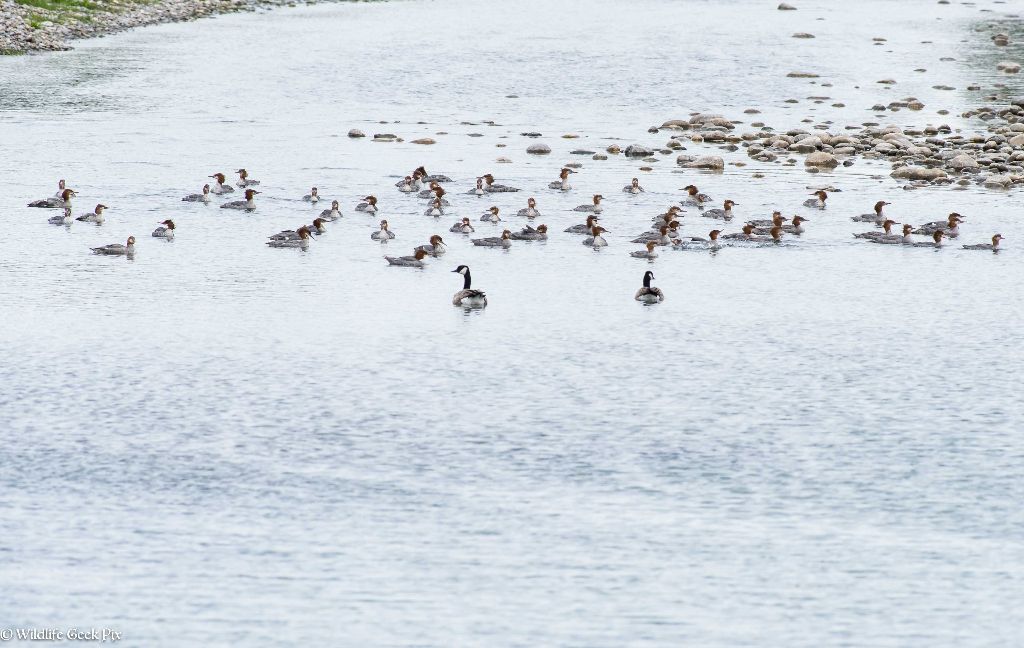
A few Common Mergansers (55 by my count) and two Canada Geese.
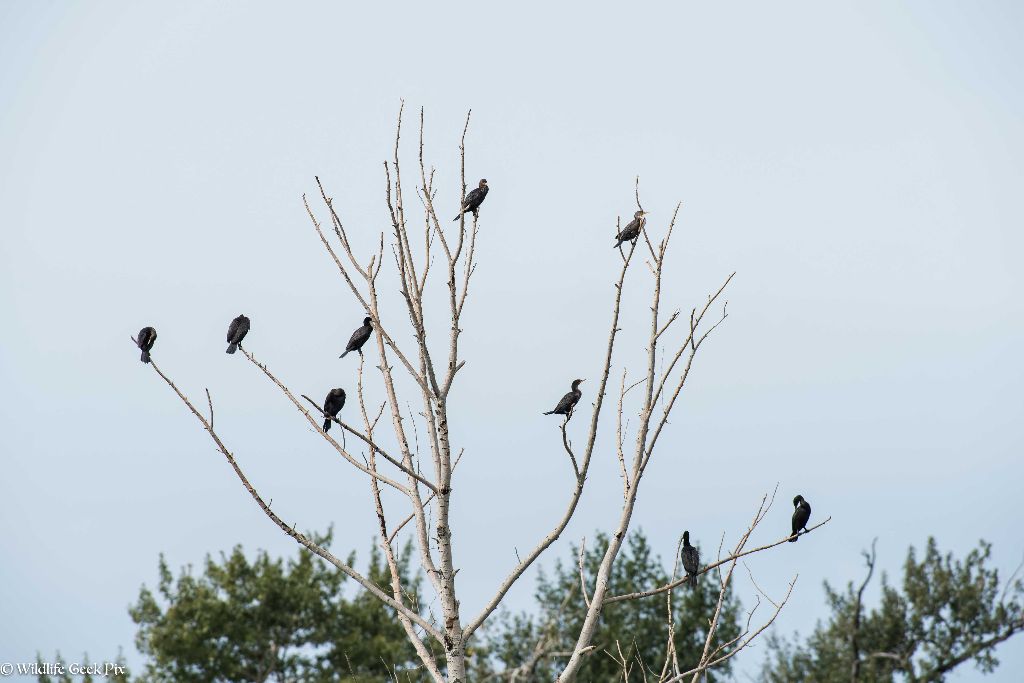
A Treeful of Cormorants.
We counted about 100 mergansers and 150 cormorants on the day. Most of them were concentrated at the north end of the park, just south of the Glenmore Trail Bridge over the Bow. This is the area that used to be the northernmost pond in Carburn park, before the flood of 2013 turned it into a major river channel, gravel bars, and an island. It is usually a very birdy part of the river.
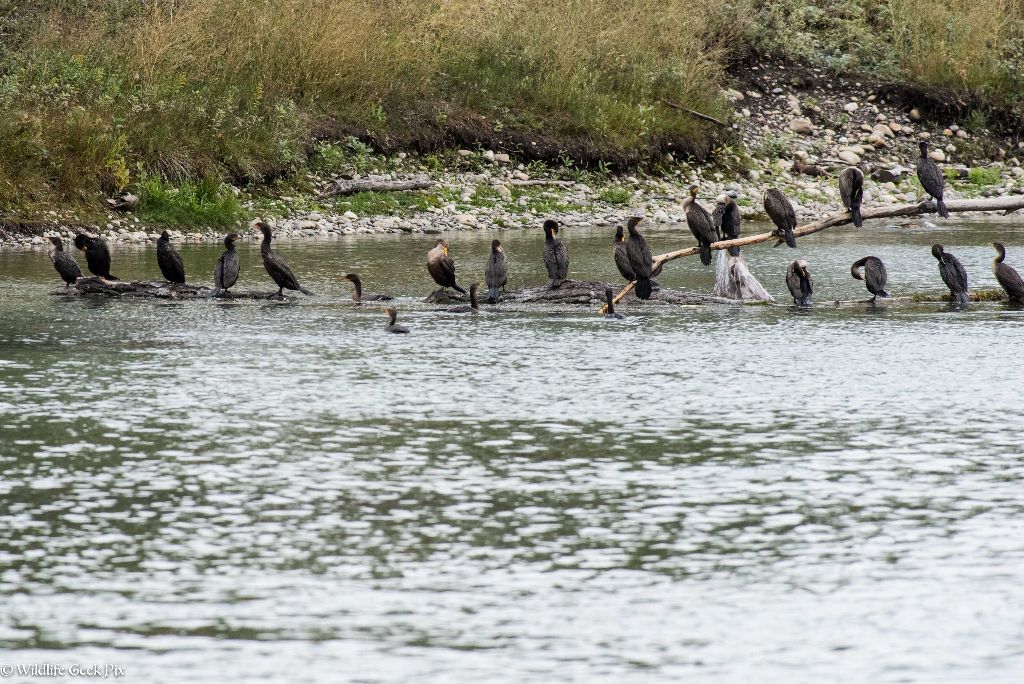
Double-crested Cormorants resting on a partially-submerged tree in what used to be the north pond at Carburn Park. The birds with light breasts are juveniles, hatched this year.
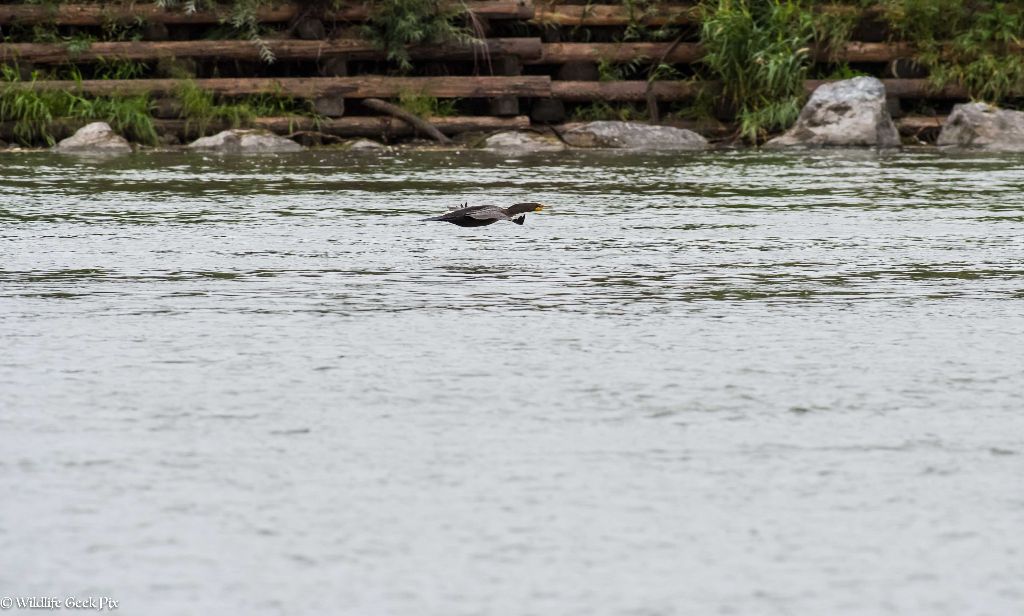
Double-crested Cormorant in flight.
We also saw about 65 American White Pelicans in this area. They no longer go to the old weir in Pearce Estate to feed, and Carburn Park is about as far upriver as the big groups usually go. (The Sunday afternoon FFCPP group counted 106 pelicans that day, and an incredible 225 Common Mergansers!)
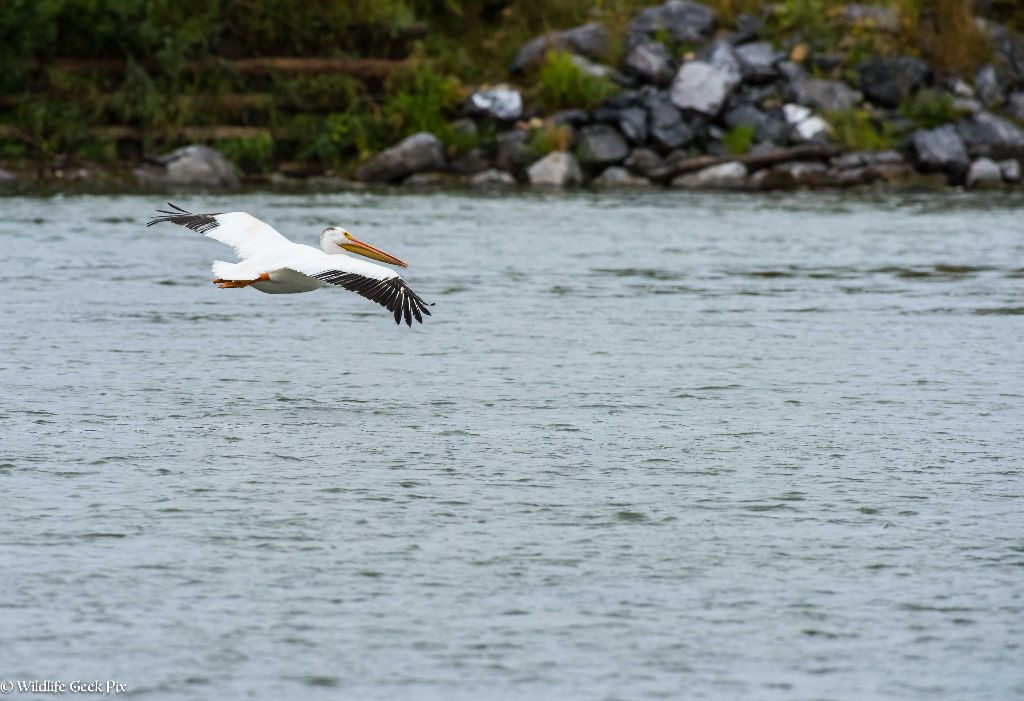
American White Pelican coming in for a landing.
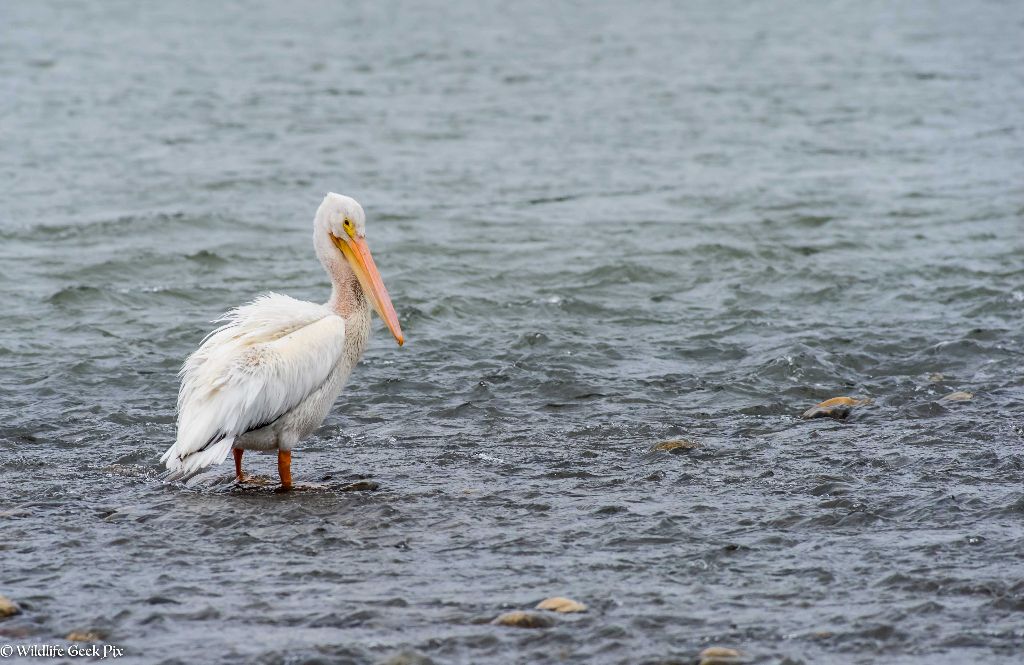
A Pelican on the Bow River at Carburn Park.
Other highlights in Carburn Park in September are the usually-reliable Wood Ducks, often seen in the quiet channel between the big island and the river shore in the central part of the park, and raptors like Bald Eagles, Osprey, and Swainson’s Hawks. We saw three of each that day, as well as this Merlin:

A Merlin scanning for prey. Merlins and Bald Eagles can be seen in this area year-round; Swainson’s Hawks and Osprey have already departed.
We counted 38 species of birds for the day, and three mammal species: the usual White-tailed Deer and Eastern Gray Squirrels, and a less-commonly-seen American Mink.
Next post: In week two of the course we returned to the Inglewood Bird Sanctuary for the first time in over two years.
The Friends of Fish Creek Autumn Birding Course will be starting up on August 31. You now have the option of signing up for either one outing a week or two. Youths accompanied by a registered adult can attend the whole 15-week course (over 40 hours in the field) for only $5. These outings are a lot of fun and are great for beginners, and for anyone wanting to explore Calgary’s natural areas.
Go to the Friends of Fish Creek site to register.
Posted by Dan Arndt
Wow, hard to believe it’s July already! The rush of spring birding is over, but there are still some birding outings to recap from the Friends of Fish Creek Spring course. We headed to the Weaselhead for the May Species Count on May 31, and headed back there again on June 14, and most of the same species were found each time, but we did have a couple unique finds on each trip. Because this is my first time trying to overlay two different walks into one post, I’ve color coded our outings in the attached map.
Our outing on May 31 is in red in the above image, while our trip on June 14 is in blue. We also had significantly different weather each morning, with the weather on May 31 being absolutely incredible, clear, and bright, while June 14 was a bit gloomy, dark, and overcast with occasional rain here and there.
We had a couple great birds on our first outing at the top of the hill, with both a Spotted Towhee and a Ruby-throated Hummingbird right at the top.
At the feeders a bit further down the hill, we found a couple of Tree Swallows guarding their nests early in the day, catching some sun and warming up for the busy day ahead.
We almost missed out on the Ruby-throated Hummingbird on June 14th, except for a brief glance up the hill caught this little guy hanging out in the gloom.
The Rufous Hummingbirds are absolutely amazing and can always be found in the same place every year. I’ve yet to see a female on this slope, but I suspect that if it wasn’t a good area for the males to find a mate, they wouldn’t be here year after year! Forgive me for sharing as many photos as possible of these beautiful little fireballs.
We headed back to the area south of the Elbow River and found the usual Eastern Phoebes at their regular spot as well, this one having caught some fresh breakfast!
As we headed towards the silverberry meadow, we heard the typical buzzing of the Calliope Hummingbirds in this area, but none of them really cooperated with the us and the sunlight, but I’m still pretty happy with the results!
We did hear a relatively uncommon bird back beyond the dense spruce where we have Boreal Chickadees each winter, and it turned out to be an Ovenbird singing on territory. Sadly, he had moved on by mid-June, but it was really quite a treat to hear and see one of these guys right our back yard!
Down at the far end of the Weaselhead, we had another Calliope Hummingbird in a spot I’d never seen one before, but at the far south end were a number of Grey Catbirds flitting around in the aspens, mewing away and singing their odd, disjointed songs.
Another nice treat were a few Ring-necked Ducks which have been at these south ponds for a few weeks. It seems like there’s a lot more of these around this year, as they just keep turning up all over the city, but maybe it’s just a matter of getting out into the places they like to hang around a little bit more.
On our walk back to the start we had our share of great birds as well, like this American Goldfinch singing from high in the trees, or the usual Cliff Swallows under the bridge over the Elbow River.
Have a great week, and good birding! Watch for the Monday supplemental post covering what we found at our visits to North Glenmore Park on these two outings!
Posted by Dan Arndt
Our outing on May 31 was to the Weaselhead Natural Area as part of the May Species Count, and we went back there on June 14 as well, so I’m going to roll those out in a single post next week. Instead, I’ll be posting some photos of our outing on May 30 to the east end of Fish Creek Provincial Park between Hull’s Wood and Lafarge Meadows, an area I’ve covered for the past few years.
I was accompanied by Rose Painter, my co-leader for our regular Sunday morning outings for this spring, and we both found a lot of good birds that morning. While the weather was gloomy and grey, it was still quite warm, and we thankfully didn’t get rained out.
I think the rainy/gloomy weather had put down a few birds overnight, because we had an abnormally high number of Baltimore Orioles singing throughout the day: eighteen males singing and a lone female that we spotted as well, compared to the usual number in this area being about half a dozen or so. It was really nice to have these guys so actively singing, despite the gloom.
We also had our usual numbers of Spotted Sandpipers, along the river, retaining ponds, and right on Fish Creek itself. While they weren’t actively displaying, there were a few that we were pretty sure were sitting on nests.
It was also really great to see a good number of Killdeer along this stretch. In 2013, I had ten nesting pairs, while in 2014 I was entirely shut out of this species, as many of the gravel bars had shifted and some had even totally lost their gravel patches and were mainly boulder strewn. This female was trying to lure us away from her nest right on one of the newer, much more extensive gravel bars along the Bow River.
We also had our first really good looks at Cedar Waxwings for the year, which had also returned overnight in some pretty good numbers. They were actively feeding low in the bushes along the river, where the insects were most active.
Along this stretch of the Bow River, I’ve had a pair of Willow Flycatchers breeding and nesting for the past three years. Each year they move the exact site of the nest, but they’re always within about two hundred meters of the spot where I first found them. They’re a little unusual to find within the city, but their calls and songs are distinctive. This photo also shows that even using the eye-ring as a field mark can be somewhat tricky, because this little gal has quite a prominent one.
This gravel bar is also where I get my usual Brewer’s Blackbirds, and rarely get them anywhere else on this route. One of the perks of doing a route like this year after year is finding all the usual spots to find great birds. I do think it would be fun to switch it up every once in a while, but I do like seeing these guys in the same spots every year.
We followed the edge of the river all the way down to the boat launch, finding some Franklin’s Gulls, but not much else along the far side of the river. We also found a nice male Brown-headed Cowbird displaying close to us. They really are quite interesting birds to look at, no matter how you feel about their particular breeding habits.
One of the other nice things with days like this, similar to last year, is that this is still during the main thrust of northward warbler migration. Last year, I had my first Blackpoll Warbler of the year, and this year I turned up this young male American Redstart, singing away along the creek just off of Sikome Lake.
Once we crossed under the Highway 22x bridge, things slowed down a little, but we did get some good looks at some waterfowl along the stormwater ponds, including this Cinnamon Teal that we surprised with a brief look at, and a few families of Canada Geese with their babies.
Further south along the river bank, we had some good looks at Eastern Kingbirds, but unfortunately in the years that I’ve done this route, we’ve never found Western Kingbirds in the poplar stand south of the bridge, where I’ve been told was one of the few places in the city they were known to breed, until recently. I suspect the heavy development on both the east and west side of the park there has made it a little less accessible and appropriate for them to nest.
One of the perks of the flood in 2013 was the generation of habitat for a number of species. The large piles of debris in the parks make good homes for House Wrens, Lincoln’s Sparrows and Song Sparrows, while the cut banks of the Bow River and Elbow River created large expanses of open banks, perfect for both Northern Rough-winged and Bank Swallows to nest in, which they have done along the south edge of my route. It’s always nice to see these guys, and even better to get them up close and personal like this.
The last really notable sighting of the day was this White-breasted Nuthatch, who was hammering away at this bit of excrement near Sikome Lake. Here he his proudly displaying his prize, which I assume he’s taking home to feed to his young. Nature isn’t always pretty!
In all, we covered just over 16 kilometers (10 miles!) in eight hours, and broke my previous record number of species by 1, finding 76 species in this area. It was a great morning (and early afternoon), and I think maybe one of the more under-appreciated areas of Fish Creek Provincial Park.
Good birding, and have a great week!